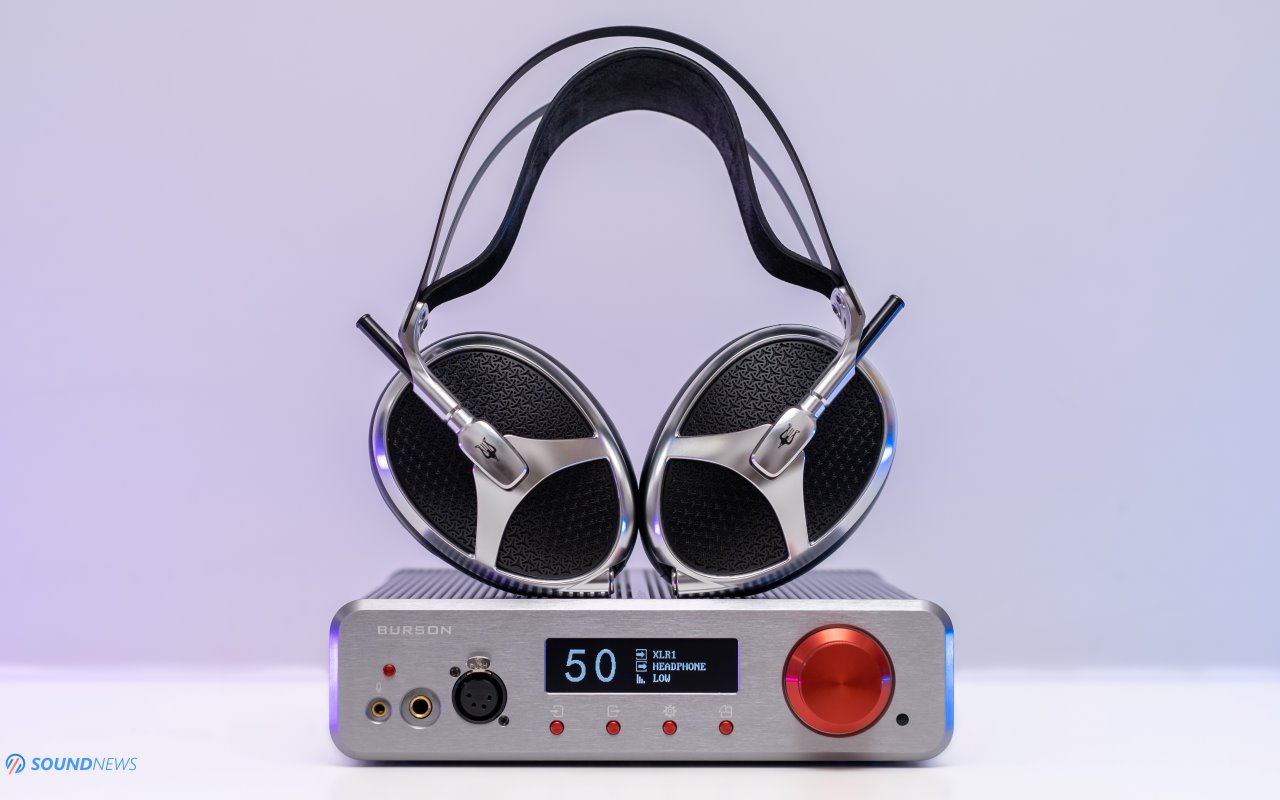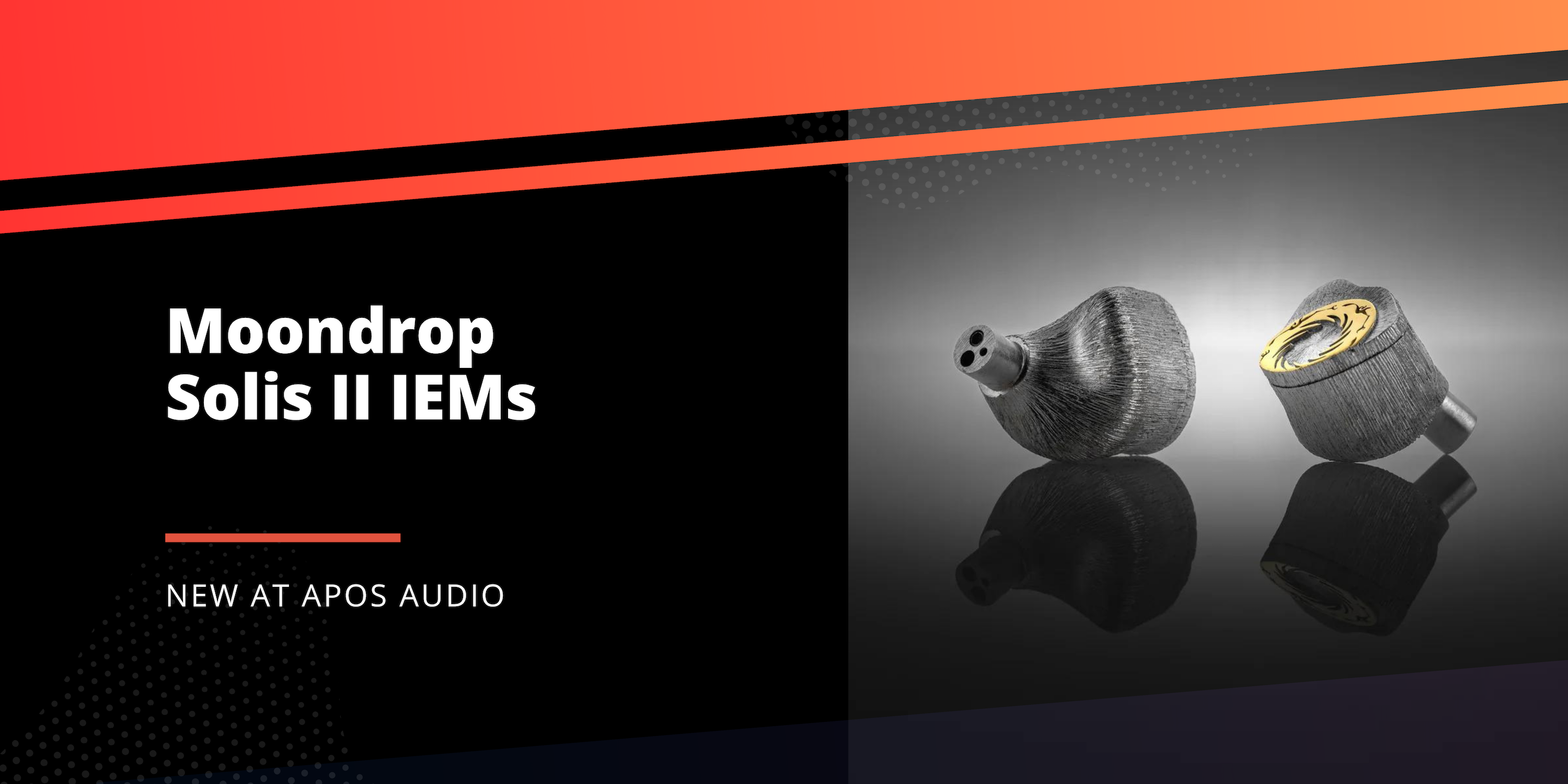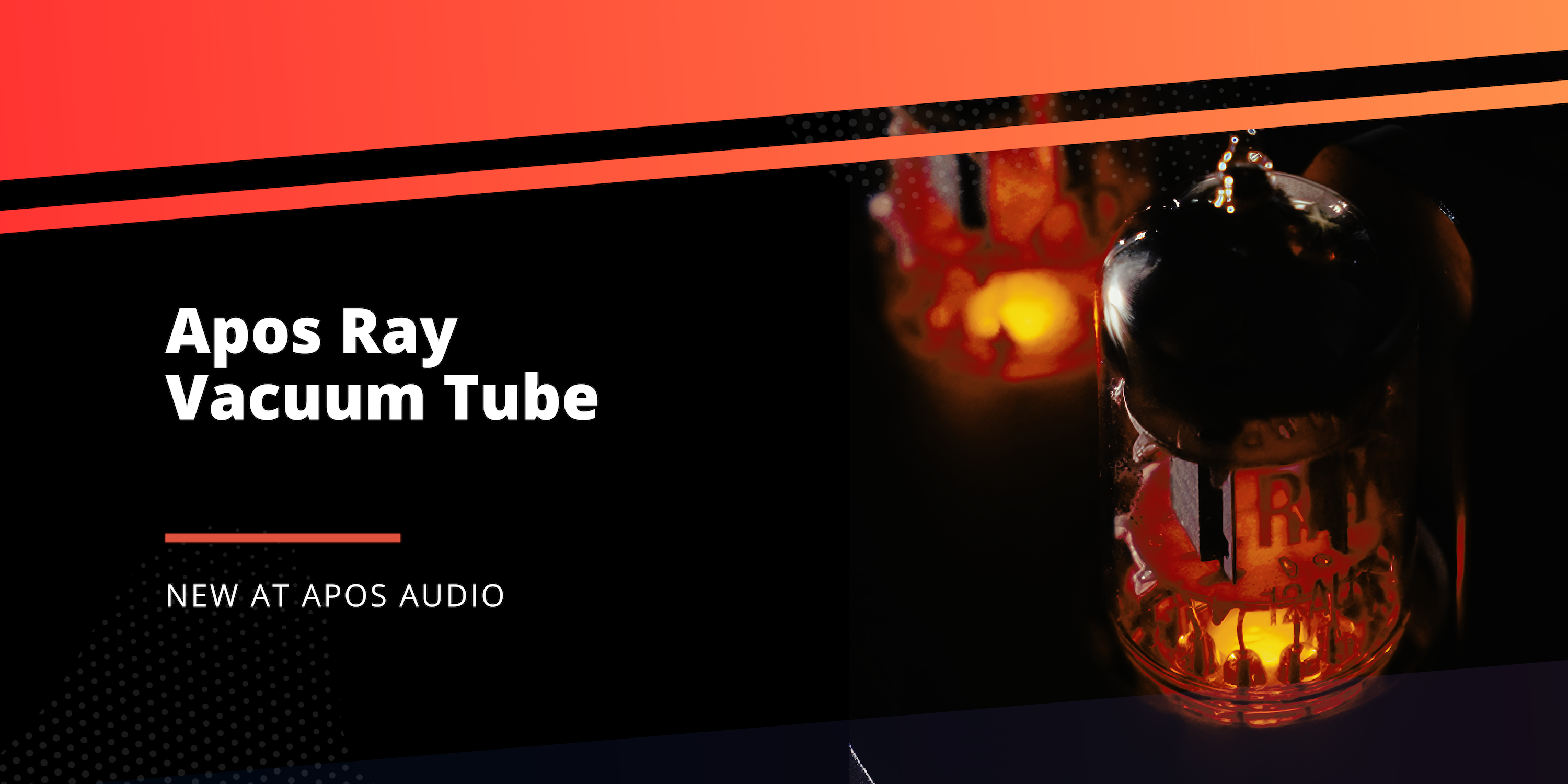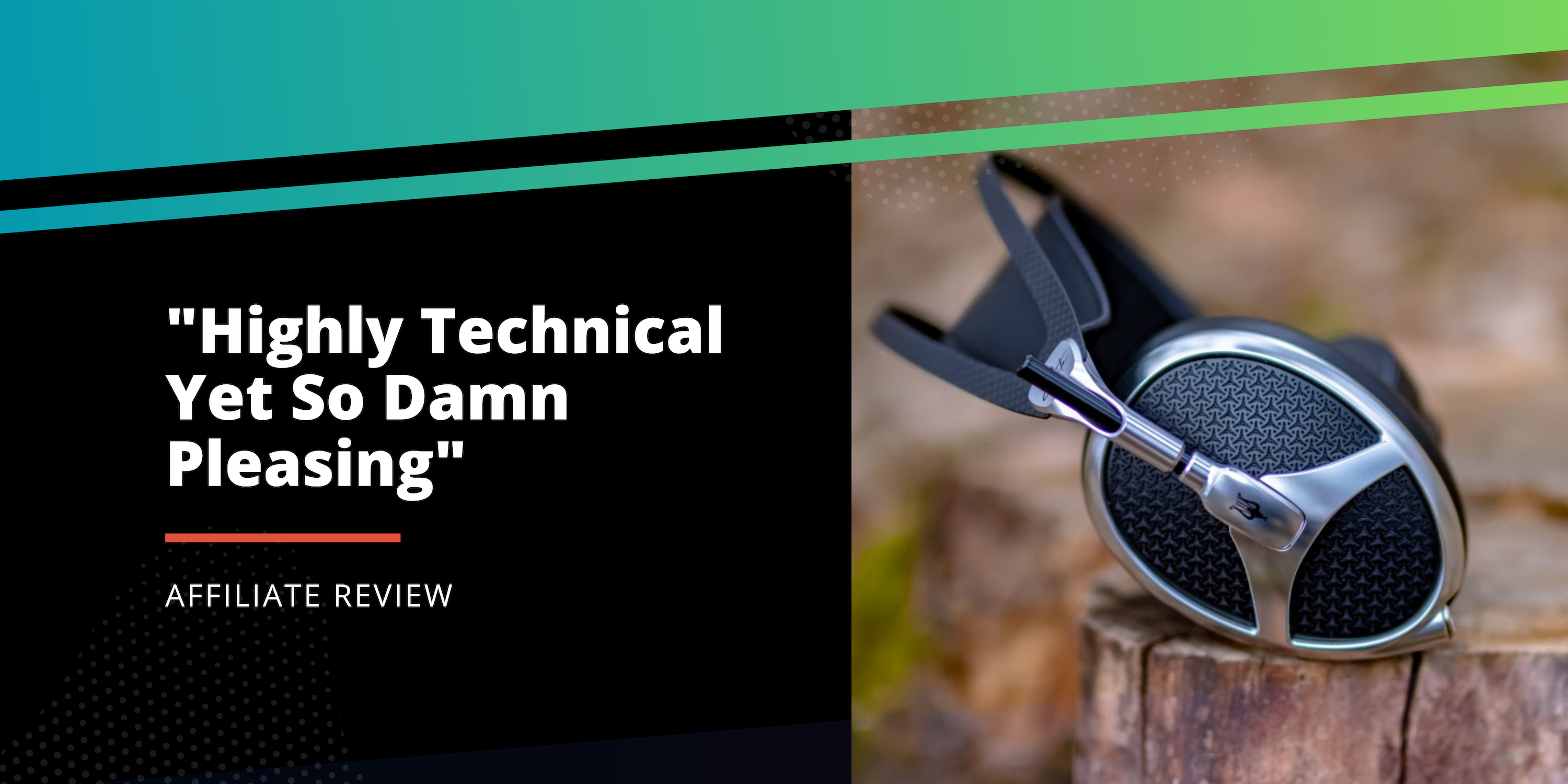
SoundNews: "Meze Elite Highly Technical, Damn Pleasing"
Note: This article is based upon the article "Meze Elite Headphones Review – Where Craftsmanship Meets Sonic Wizardry” made by Sandu Vitalie on his website SoundNews and is printed here in partnership with SoundNews. The review was originally posted on June 21st, 2023.
SoundNews Reviews the Meze Elite Isodynamic Headphones
Legend has it that in the mystical land of Romania, where the Carpathian Mountains touch the sky and the Danube river runs below with melodic grace, a group of audio wizards gathered to create a brotherhood that would last a lifetime, hand-crafting headphones while slowly brewing a house sound. Armed with a passion for sound and a penchant for design and fine craftsmanship, they set out to sculpt a dozen of headphones that carry the lyrical genius of George Enescu himself. But enough with the folklore and let’s check my story behind these shiny-looking headphones.
After dropping my Meze 109 PRO review some time ago, people started actively asking on several platforms if a Meze Elite review will follow shortly. A winky smile was everything they got from me, as I was already measuring and listening to them.
Before departing on a long adventure, I want to be clear that while I’m Romanian, it doesn’t mean that I will be hyping them on cloud nine. If being completely honest with you, the first Meze headphones impressed me with their looks and material choices, but not so much with their sound. Years passed and Empyrean hit the market. A massive marketing push sent them into the hands of known editors all around the globe. I tried them in the comfort of my home and I was awestruck but their looks, comfort levels, and overall build quality! Nothing came remotely close to them at any price and while their sound was incredibly smooth and relaxing, they didn’t click with fast-paced music, they couldn’t reach the speed of light and their cleanness and transparency weren’t rivaling the very best planar headphones. After having them for a week, I sent a long email with constructive feedback. While I was doing this, known headphone publications were offering them the highest scores, but knowing my real-life experience and my high-end headphone rig which I trusted with my own life, I knew that two massive issues were slowly building up. I didn’t know if I wanted to review them, as my article would be…less dandy and joyful, and at the same time, I didn’t want to discourage the Meze team, because frankly, I was seeing a bright future in front of them, just not in a very near one. I was sitting between the hammer and the anvil and since I wanted to save my reputation, I suggested that I will be doing a review for their successors.
Fast forward a few years and the young Meze team came up with a flagship pair of headphones calling them Elite for obvious reasons. At that moment, I knew that my feedback paid off big time, my body and mind were ready to experience the best sound that Meze has yet to offer. Thor Almighty! The sound improvements were considerably bigger than what I was expecting. From a somewhat limited treble delivery (especially in the top octave) on the Empyrean, I was getting more information up top, more bite and sparkle, while keeping the legendary soundstage and depth. The sound got tighter, the bass felt cleaner, and suddenly, new nuances started surfacing in the most unusual places. That mellow and almost shy nature of Empyrean was no more! Elites were shining in full-plated armor, striking faster and pounding harder as well. The difference was massive, so big that in fact, I wanted to have them by my side. The Elites were revealed at a greyed-out part of my life, I was running out of time and I was working on so many projects that…unwillingly I neglected their existence. As was the case with my 109 PRO review, I’m a little late to the party, but don’t you worry, you’re at the right place as you’re currently reading the most complete Meze Elite review. If you would still have some burning questions left after finishing this story, then I owe you a bottle of wine.
Although I was sometimes harsh and pushy with their old creations, I was doing it on purpose, pushing the team into crafting better cans. The Meze team that I currently know has little in common with the one I met in 2015. I see familiar faces, but their internal forges are running hotter these days and I cannot wait to see what the future holds for these guys.
Meze Elite aren’t targeting common headphiles, these aren’t road paving headphones like 99 Classics were back in the day and while they look more or less the same as their predecessors, I assure you that nothing will resemble the sound of their founding fathers. Meze’s latest headphones will set you off $4000 in the USA and €4000 in Europe and as such, I decided to express my subjective impressions in an overkill way, detailed headphone measurements will follow shortly and I also included must-read comparisons with two of the best planar headphones on the market, so let the journey begin!
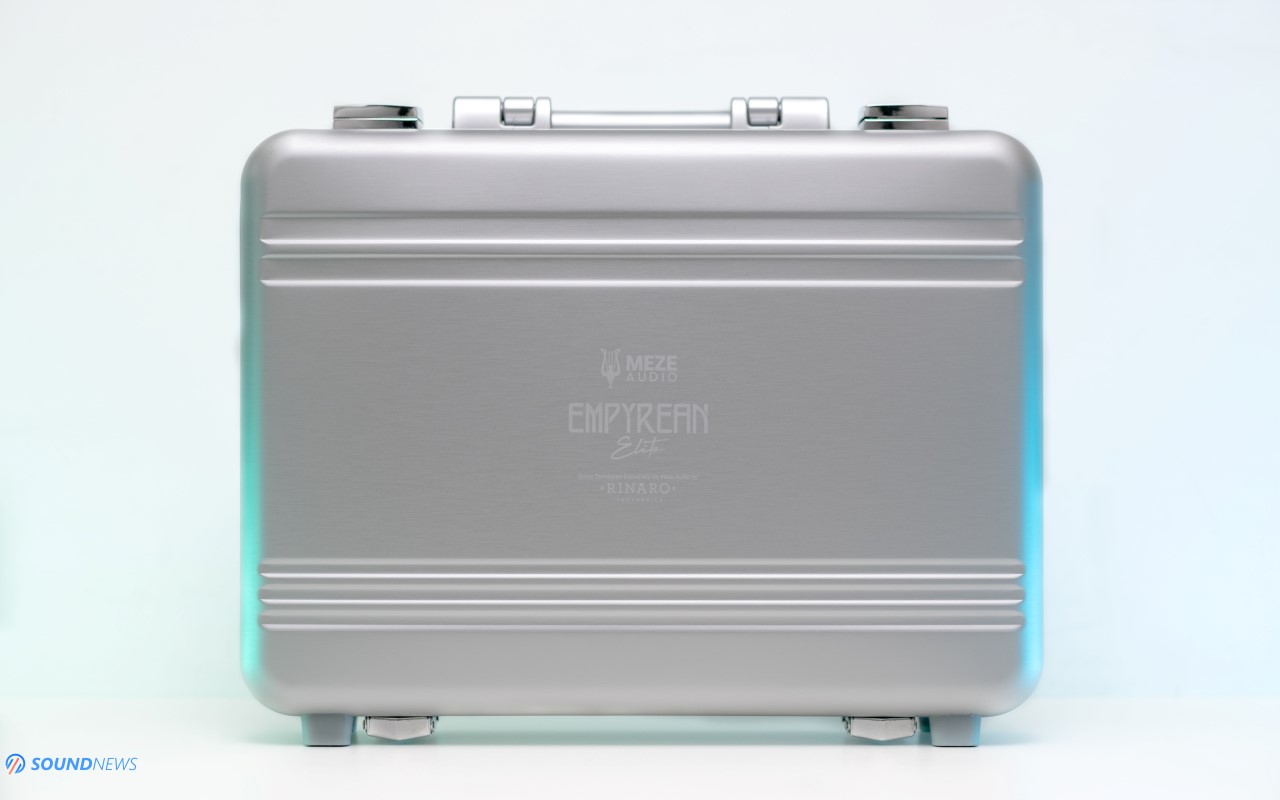
Unboxing Experience
I believe Meze Empyrean was the first planar headphone that came in a beautiful metallic suitcase. The Elite got the same treatment and it seems that a few competitors got rid of boring display cases in favor of travel cases like this one. Their metallic suitcase adds a high-end flair and suggests their status. It has the right size, it’s sturdy and it features a locking hinge. The case will nicely protect them from the outside world and the foam inserts will absorb the shocks. Besides the headphones themselves, you are also getting a certificate of authenticity (where the serial number is stamped), a user manual, two sets of earpads for two distinct sound signatures and there’s a nicely made detachable headphone cable terminated with either a 6.35mm or a 4-pin XLR jack, depending on your order. This is not your regular stock cable, but a much nicer silver-plated or copper PCUHD that uses higher purity conductors.
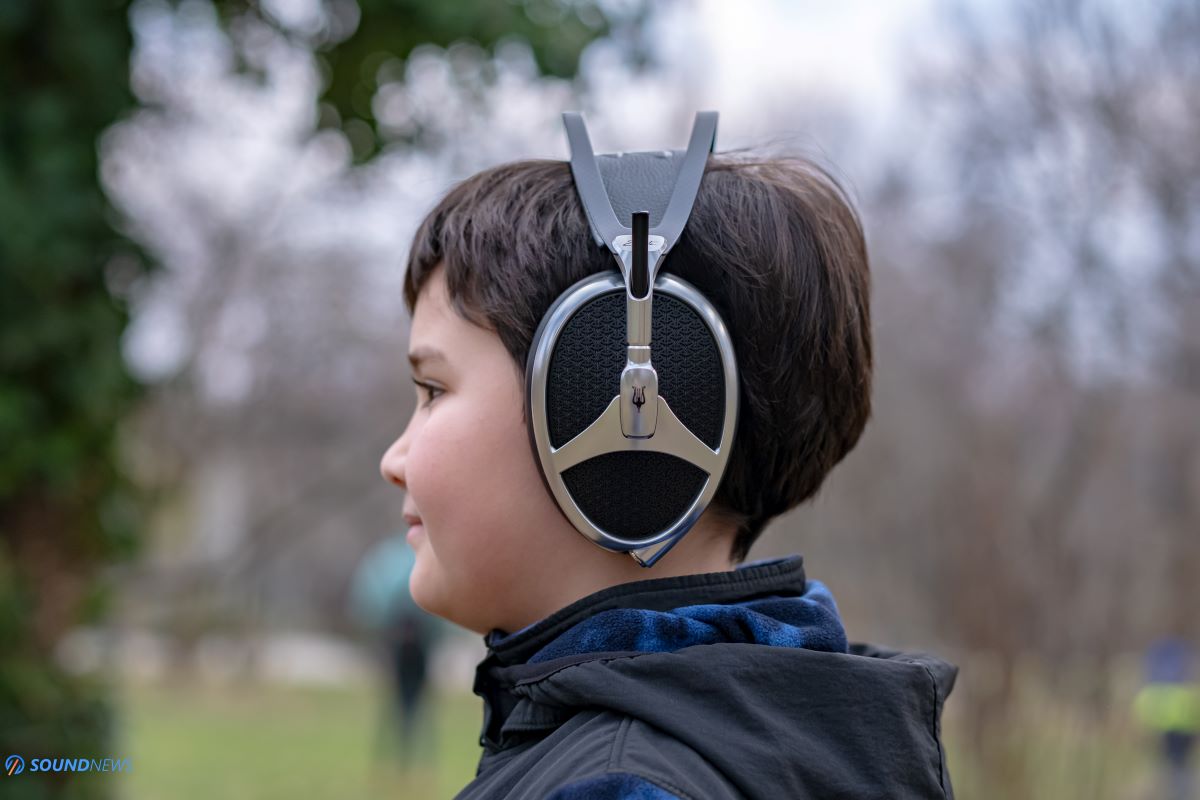
Design & Build Quality
Before we move on to sound impressions, we need to talk about one requirement a high-end set of cans should have. We can agree to disagree on several things regarding their performance and measurements, but we can all agree on one thing: When it comes to looks, build quality, and comfort levels, Elite and Empyrean are pretty much unbeatable. Full Stop. I still remember when I was rocking a pair of Audeze LCD-4 which were the heaviest headphones at that time and a close friend casually introduced me to the Empyrean. We debated about their sound the whole evening, but God damn! That comfort level, that attention to detail, those supple smooth lines, those removable ear pads? Empyreans were at the top of their game and even today nothing comes close to their overall build quality and comfort levels.
I own a sizable headphone collection; I have an actual headphone wall that is growing in size and I fear that next year I will need to pick another (brick in the) wall. Antonio Meze is a designer at heart, you can see his work when looking at 99 Classics, however starting with the Empyrean and now Elite, everything went up a few notches and I wouldn’t change a single thing in their build. These should last a lifetime, everything is built from metal, leather, and carbon fiber, giving them an authentic timeless look. These guys are building the unmistakable Meze design for a while now and you can certainly feel a similar vibe with their entire lineup. It’s no wonder that most of the listening stations at the Munich High End Show were using the Meze Elite, as there’s something that always draws your attention to them. I can complain about the look of many headphones, even my co-designed Apos Caspian isn’t looking that great as I’m no headphone designer, but the Elites staying near costlier headphones look like timeless art pieces that would never be obsolete. There were many times when I took them off and stared at their craft for a few minutes, it makes you wonder how a lightweight build like this came out so sturdy. Some headphiles don’t care for the look of their equipment and headphones, but I always appreciated good looks and timeless materials as from a certain price point, these are becoming pieces of modern furniture blending looks with function.
If you go to Meze’s website and start scrolling down the Elite page, you’ll observe that more than half of the information was dedicated to their looks & build quality, as these guys are genuinely proud of their achievements. High-end headphones should last a lifetime and these are probably the only headphones from my stable that will do so. Regardless of how clumsy and careless you might be with them; the Elites are fully serviceable from earpads to everything else. That’s right! Including the chassis, nuts, and bolts, everything can be reassembled and put back together with home tools.
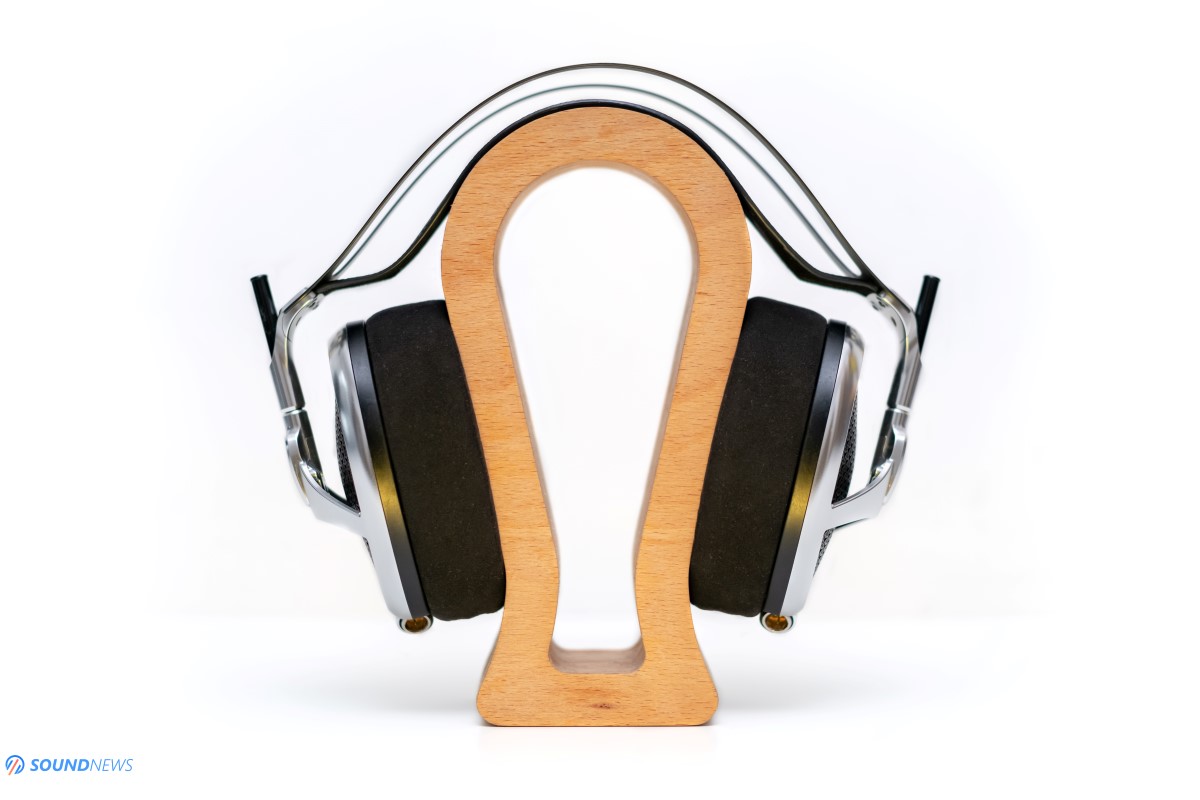
Comfort Level
Machined yokes and earcups made them sturdy, a carbon fiber headband with a real leather headrest was added to the frame for maximum durability, making them ultra-light at the same time. Durable components were cleverly put together, trying to lower their mass as much as possible. I wish boutique and high-end headphone builders would give higher importance to weight, as people like me don’t use them for 20 minutes listening sessions or as pieces never to be touched in an art-nouveau living room. We use them for hours on a daily basis, we don’t have Arnie’s necks and that’s why their weight should be as low as possible without compromising their build quality. Meze Elite weights 420 grams and while that might sound like a substantial amount, these feel featherweight near a pair of Erzetich Phobos (680 g), Charybdis (740 g), Moondrop Venus (615 g) and Audeze LCD-4 (690 g). I seriously think that Meze struck a nice balance between sturdy, lightweight and comfortable which very few are attaining.
Once I experienced magnetic ear pads on Empyrean and Elite, I wondered why nobody came up with that idea early on. The whole process takes a second or two and I don’t need to apply lots of pressure. Try doing that on the Hifiman Susvara and Audeze still glues their earpads on LCD-4 and LCD-5 which is a real pain where the sun doesn’t shine when exchanging worn earpads with new ones.
It takes some time to find a perfect spot with any Audeze and Abyss headphones, but with Empyrean and Elite you just put them on your head and…that’s pretty much it. The clamping force is non-existent and the position of the rods doesn’t influence the side pressure – another major quality-of-life improvement. Some headphones are becoming uncomfortable once you are lowering the position of the rods, but the Elites are not one of them. I can go on and on about how much thought was put into their build, attention to detail, comfort levels and that wouldn’t be enough. So far these are the benchmarks in terms of looks, build and comfort, it’s really that simple.
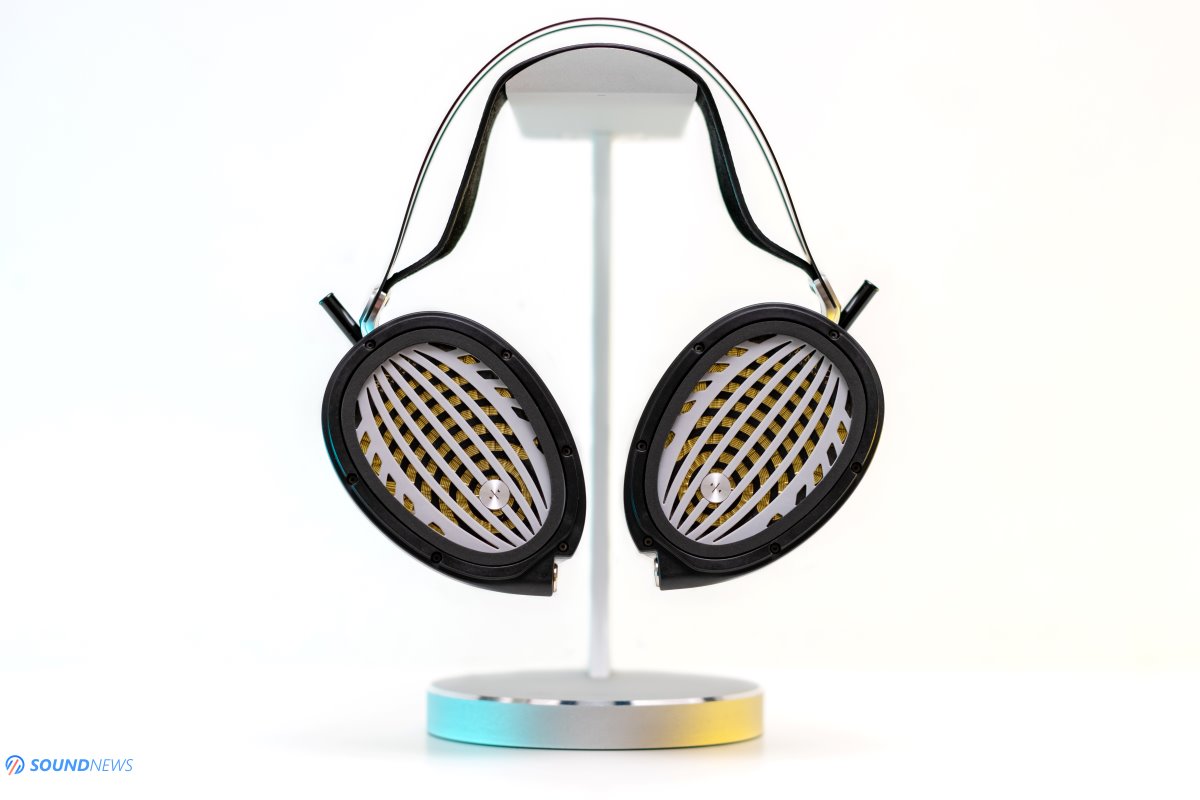
Tech Inside Meze Elite
The Elites are their Crème de la Crème & Magnum Opus headphonesand as such, a tremendous amount of time was put into developing a brand-new driver assembly. They didn’t want a polished and slightly improved Empyrean, a side step was out of the question, wanting something that they could be proud of, something that would redefine Meze as a headphone company. That’s why Meze together with Rinaro closed their doors and went back to the drawing boards. After three years of R&D, the MZ3SE drivers saw the light at the end of the tunnel, improving key areas such as resolution, speed, weight, and distortion.
If you want to know every step Meze took upon finely polishing the MZ3SE drivers, I recommend checking out the Elite page right here. What makes these drivers stand out from the usual isodynamic (planar) drivers is the use of dual voice coil configurations which according to their words: “The use of dual coil arrays not only creates a balanced frequency response around the whole range, it also allows for better frequency targeting within different areas of the ear, improving acoustical perception on the upper frequency range”.
In simpler words, you can see a spiral coil forming a circle at the lower part of the driver which is more efficient at reproducing mid and high frequencies, shooting sound waves directly into your ear canal. The switchback coil (the blue one) is more efficient at reproducing low-frequencies (the bass), positioned in the upper part of the driver. This solves a common problem with conventional planar magnetic arrays whereby reflected signals enter the ear canal with different time delays, worsening the imaging and the holography.
As you probably guessed, these are open-back isodynamic (planar) headphones that use oval-shaped drivers having an unconventional size of 102mm by 73mm. The Elites are fairly easy to drive thanks to a 32 Ohm impedance and a sensitivity of 101 dB per a single mW of power. Of course, we will be comparing their sensitivity with several planar headphones, just to be sure if nuclear reactors are needed to drive these or if portable devices are more than enough.
The coolest invention developed by Rinaro is the isomagnetic earpad attachment, which utilizes the magnetic field generated by the driver to hold the earpad in place whilst also redirecting the magnetic field back into the driver for improved driver efficiency. Changing earpads is no longer an issue of the past, but a cool feature that envies even hardcore AFOLs (adult fans of Lego) like me.
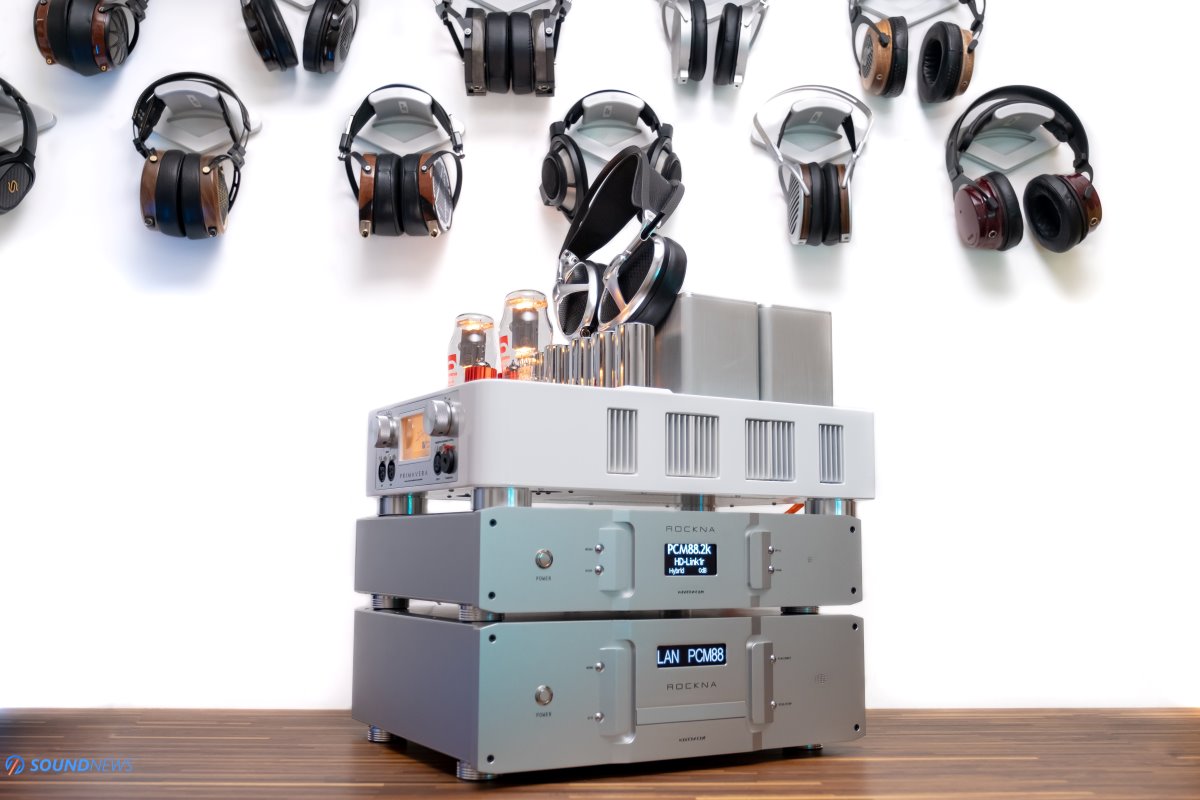
Test Equipment
A flagship pair of headphones will need a flagship headphone setup to shine at its best and that’s why I went overboard with electronics. I used a Rockna Wavedream NET ($10.000) music server (4TB of SSD storage) filled with DXD and DSD content, it also worked as a Roon server connected to streaming services such as Qobuz and Tidal. A Rockna Wavedream Signature XLR DAC ($20.000) follows via an i2S connection and then a marvelous sounding Trafomatic Audio Primavera ($15.000) headphone amplifier will squeeze the last drop of performance from the Elite. Everything is being powered by a KECES IQRP-1500 isolated power conditioner, the media converters (Ethernet to Optical and vice-versa), and the wireless router are powered by a KECES P14 linear power supply. As for power and interconnects I used Crystal Cable Reference Diamond2 cables and pure-silver headphone cables. With that out of the way, I think I’m ready to hit some eardrums!
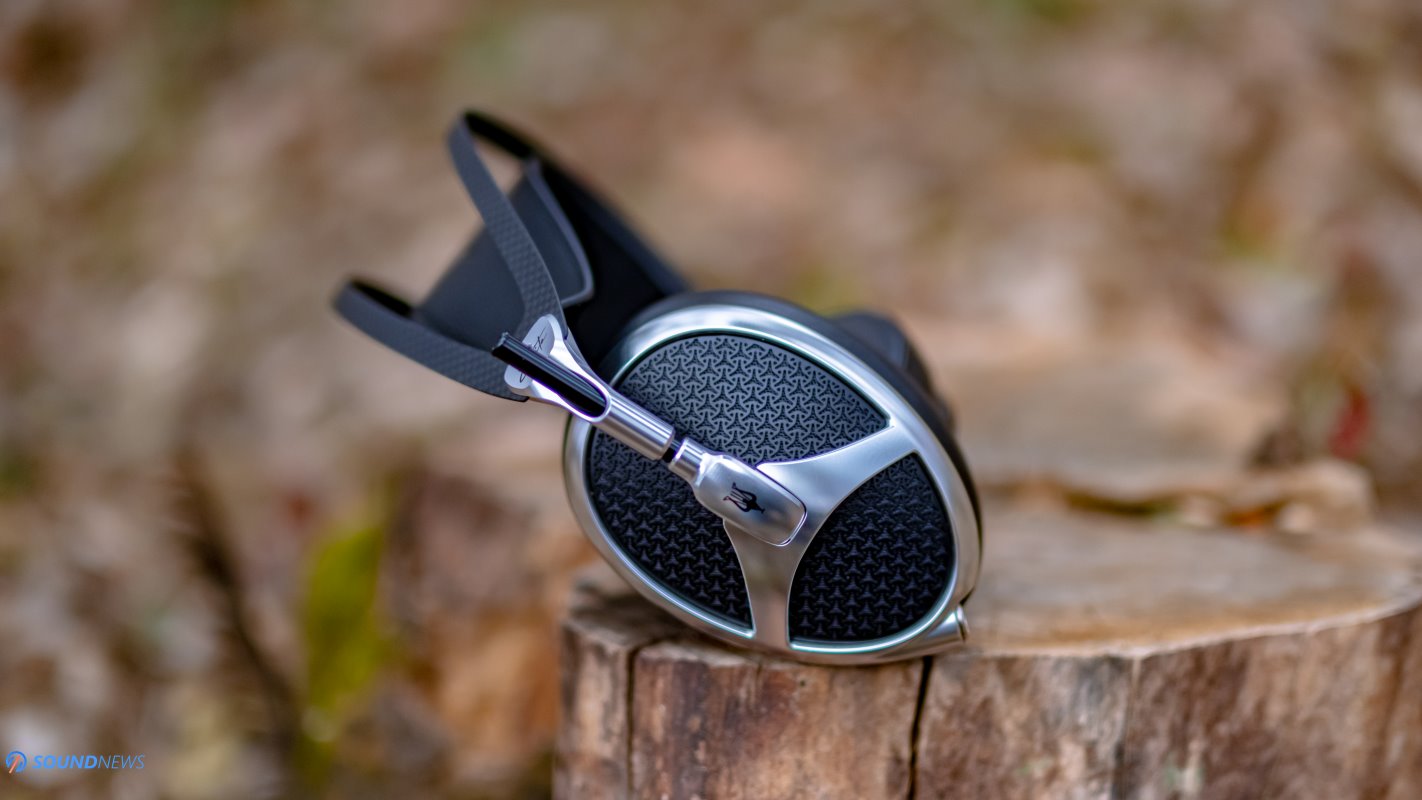
Sound Performance
I. Preliminary Sound Impressions
I dreamt about having a headphone wall a long time ago. I would use a pair of headphones for modern tunes, another one for rock, the next one for jazz and funk, one for big orchestras and classical music and there would be another pair that should work as my daily driver. I’m fortunate enough to tell you that my dream has been fulfilled. As you’re well aware, nothing comes free in this life, I needed to work my way up and the goal that I had in my mind always guided me forward. It wasn’t my top priority…that would be my family and close friends, but it was surely my second priority. Honestly, I’m not using most of these headphones. Sometimes I’m getting melancholic, remembering a few moments using a particular set of cans that I’m keeping for the sake of old times, but in reality, I’m using three, maybe four sets of headphones. Hifiman Susvara is currently my flagship headphone when it comes to sound performance. The huge elephant in the room is that you’ll need end-game electronics, several times more expensive than the Susvara themselves to reach their optimum performance. Sometimes I don’t want to power the Primavera that has a limited life span for its super-rare SV811-10 tubes, meaning that I will never power it when editing videos in Adobe Premiere, or casually watching videos over YouTube. My daily driver work-horse needs to be easy to drive, good sounding, lightweight and super comfy. Slowly but surely, I shifted from the Apos Caspian to Meze Elite, because it’s so easy making them sound great. You don’t need an overkill setup, you don’t need fusion reactors to unlock crazier dynamic swings, you don’t need super-rare tubes to make them big sounding and most importantly, their tonality was spot on from day one. I don’t find them bright or warm sounding, although these are definitely putting a warm blanket over you versus linear-sounding cans.
With other flagship headphones, I needed to build a proper system around them to make them sing, I’m looking at you Hifiman Susvara, Audeze LCD-5 and even Sennheiser’s HD800/800S need specially tailored equipment to release the Kraken within. By comparison, Meze Elite aren’t like that, these aren’t difficult to drive, and even a few USB dongles, portable DAC/Amp combos and battery-powered portable digital audio players (DAPs for short) could do more than a decent job at delivering a fun sound signature. I can plug them into Chord DAVE’s headphone jack and do my job without worrying about power or tonality.
If I’m asked to pick a single pair of headphones to be used on a deserted island, then without thinking twice I would pick the Meze Elite. The best trait of the Elite is that everything sounds great on them. Pick a musical genre, a track that you know for a lifetime and immerse yourself into the music. You can choose between an airy & reference sound by picking the angled Alcantara pads, or you can go with hybrid ear-pads which are all ‘bout that bass, making you snap fingers to the rhythm of the music. Regardless of what amplifier you’ll be using, these won’t cripple the soundstage or its depth. The hybrid earpads won’t limit the airflow, the beauty of soprano voices, or the rise of crescendo moments in reference recordings. If you are hunting for a single headphone that does everything right without the need for pricey electronics to shine bright, I think that Meze’s Elite are those headphones.
I wasn’t a big fan of Empyrean’s sound signature and overall performance…and I’m not shy about saying it out loud. I didn’t want to influence the team, as I knew how much effort and dedication went into making them. However, since the arrival of the Empyrean, I started guiding Meze on what I felt should be improved with a future model. A high-end pair of headphones shouldn’t be compromised on the technical level. I waited and I waited some more until Elite was revealed to the world. I’m again late with my review, but there’s an old saying: good things come to those who wait. I don’t like rushing things; I want to be 110% sure about what I’m going to write. I wanted to check them with all kinds of electronics, solid-state and tube-based amps, with portable and desktop gear alike. It’s a long and tedious journey, but a rewarding one as the Elites refused to sound bad even with low-powered devices, and let’s talk about that in detail.
II. Power Requirements & Amp Pairings
I currently use a 30-kilo monstrosity to drive all my cans that is occupying most of my desk space and I used two Benchmark AHB2 power amplifiers (that were supposed to drive passive loudspeakers) in the past. Do you think I wanted to spend my money on behemoths that would occupy most of my workspace? I didn’t, but a particular headphone made me do it and I couldn’t back up. The Trafomatic Primavera is a wonderful-sounding amplifier, pushing 9 Watts per channel into 50 Ohms, there isn’t a demand that Primavera won’t satisfy with a smirk on its metallic face. It will drive anything and there would be still a ton of power left on tap. I didn’t purchase it only for the power-hungry Hifiman Susvara, but as a long-term investment as tens of headphone reviews would follow soon and who knows, maybe inefficient headphones would stay for a very long time. Nobody knows and nobody wants that.
Meze Elite doesn’t need such an amplifier to shine at its brightest, but I can’t remember experiencing similar dynamics and such a massive soundscape out of any other amplifier. If you check Meze’s history, you’ll observe that all their cans and IEMs were made to be easily driven, even out of battery-powered devices such as smartphones & tablets and that thought never left their R&D team. Having a sensitivity of 101 dB per a single mW of power at 32 Ohms the Meze Elites are easy to drive by planar-mafia standards. These won’t choke or shut down amplifiers as some headphones were doing it for me. Together with Phobos, Charybdis and Rognir, an easy-to-drive planar Fanclub is formed and that’s quite a big deal.
Did they sound better out of the Primavera versus an entry-level amp? Of course, they did! But the difference wasn’t a night and day one as it was with the Hifiman Susvara and Abyss AB-1266. The Elites can get more impactful and bigger sounding, but everything else remains pretty much unchanged.
When I’m traveling instead of carrying massive devices like FiiO M17, small USB dongles or pocket-friendly DAPs are usually doing it for me. I had no issues driving these with a HiBy R6 Pro II or Shanling M6 Ultra, even the tiny Shanling M3 Ultra and FiiO M11S sounded above my expectations, although I needed to engage their higher gain settings and use their balanced outputs for nicer dynamics. Small USB or Bluetooth dongles were doing an okay job, the best-sounding ones were the Shanling UA5 and Hiby FC6, although I was maxed out with the latter.
A high-end set of headphones demands a high-quality source and amplifier, but please don’t worry if you use an all-in-one unit or an above-average portable DAP, as these will do just fine. I’m not worrying about the power intake quantity-wise; I’m worrying about the quality of that power as these will immediately pick up new nuances with a higher-quality DAC and amplifier compared to their predecessors.
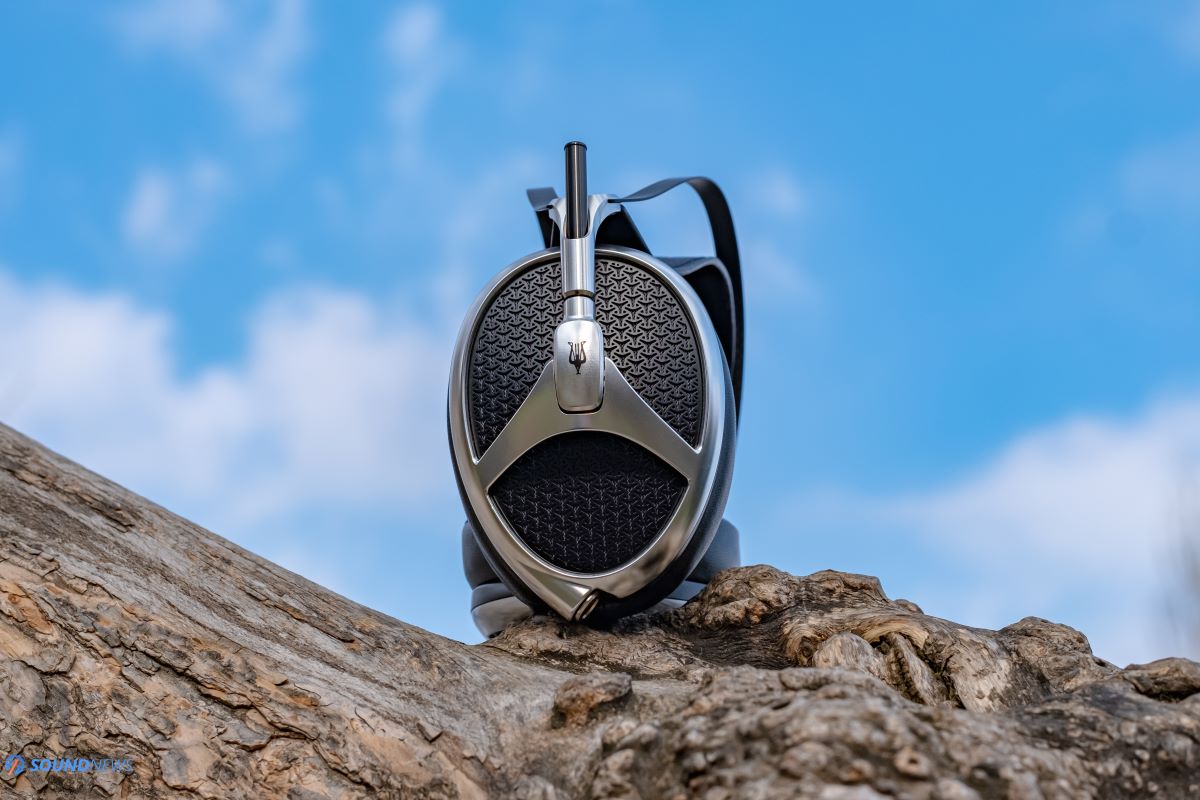
III. Transient Response & Dynamics
The biggest improvements achieved with the Elite versus their past doings were better detail retrieval (+ nicer transparency) and faster transients which seriously improved their pace, control, and ultimately the fun factor. Slow and relaxing music is part of my audiophile diet, but I can’t stand mellow and slow-sounding headphones put on modern tunes. A dopamine rush is mandatory in the morning, something that will awaken my senses and if a headphone can’t do that, then I won’t use it in my morning routine. I’m happy to report that the Elite sounds considerably snappier, faster and punchier than the Empyrean and the difference isn’t abysmal. Finally, people can talk about fast transients in a Meze headphone and that’s a big thing.
99 Classics were mellow, muddy and slow most of the time, Empyreans were considerably better in all regards, but still far from what I would consider as fast-paced. Elite forgot its heritage, choosing a ride-fast-die-young attitude that doesn’t cater to experienced audiophiles only, but to the newest generation of music lovers as well who aren’t listening to audiophile-proof recordings all day long. I’m listening to regular tunes, to the newest albums which oftentimes aren’t perfectly recorded & mastered, doing it mostly for fun.
There is a difference between when I’m casually listening and when I’m doing it for review purposes. The system I’ve built for headphone listening was constantly changing, but lately, I made it extremely technical & resolving sounding, yet incredibly fun and toe-tapping. When I’m browsing my music, I want to feel on top of the mountain, I like when dynamics are dropping like a bomb and I appreciate when a headphone is capable of transporting me there, into my musical wonderland and it seems that the Elites are clicking into place every time I push the play button.
These are hopping on my head more often, mostly because I can switch from Classical to Rock music and Elite will change their pace from relaxing to raw in no time. This change of tactics is beneficial, the technical aspect remains unchanged, boosting just the emotional aspect of music listening. Put them on meaner electronics and watch those ear lobes flap like butterfly wings. These can be polite and mellow with a USB dongle or battery-powered devices but put them on proper amps and these will be exceeding the speed limits.
As my measurements will later prove, these aren’t shy in the bass, there aren’t roll-offs with Alcantara or angled Alcantara ear pads, as the sub-bass doesn’t go lower than the rest of the spectrum, but you’ll need an amp that can sustain and control longer bass notes. If you need some recommendations, then nothing is better than a fully discrete solid-state amplifier like Enleum’s AMP-23R, Ferrum’s OOR, Burson’s Soloist 3X GT or Flux Lab Acoustics Volot. If tube rolling is your thing, I would choose a transformer-coupled amplifier since these are mostly current-driven given their low impedance. From the amps that I know of, Feliks Envy will awaken their inner demons and if you want a scarier creature than that, then Sasa Cokic’s Trafomatic Primavera will further elevate your listening experience. If Elite are your only set of headphones and you don’t want to invest too much in a headphone rig, then Shanling’s EM7 all-in-one or Ferrum’s ERCO will do just fine and these are my top recommendations.
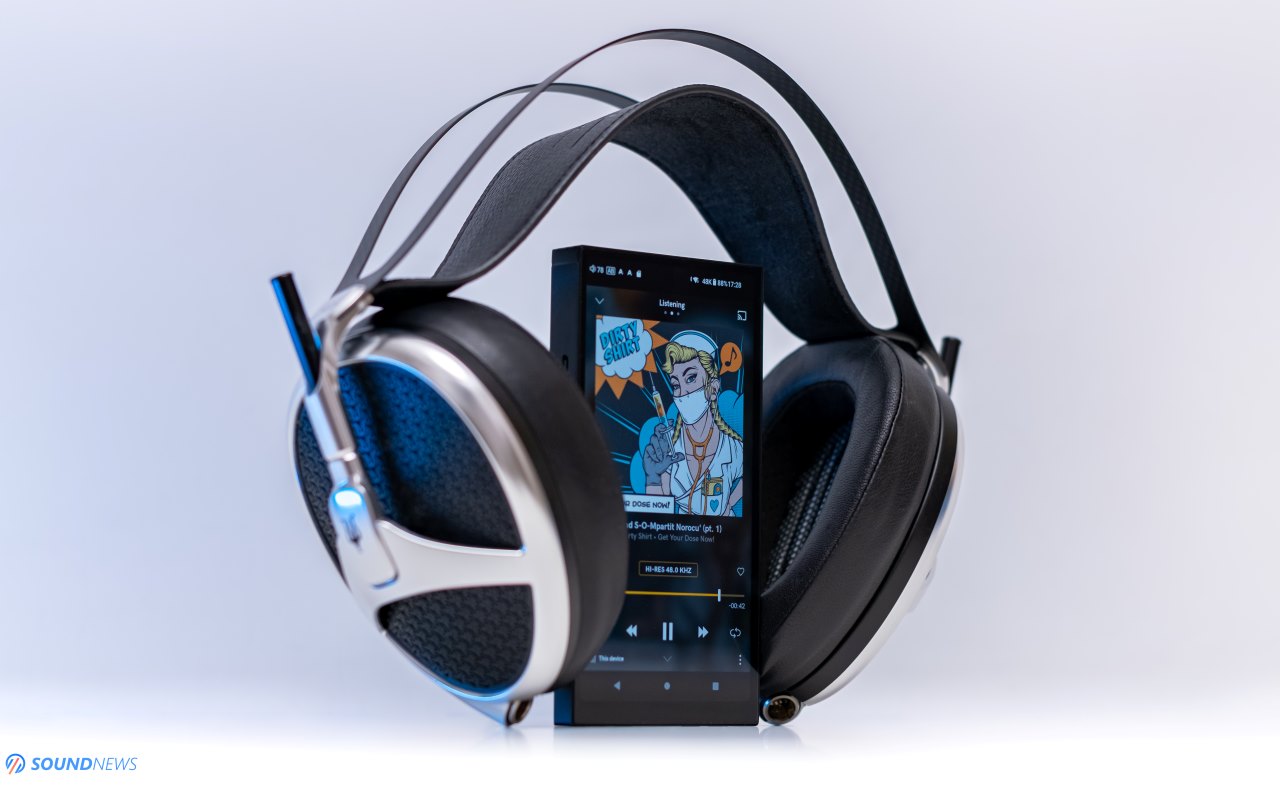
IV. Soundstage & Depth
While their tonality and natural timbre are right up my alley, the things that are calling me back are their scale, imaging and depth. The soundstage itself is an exaggerated concept for headphone listeners, mostly because most of it is the work of our imagination. In a stereo setup, you have a real soundstage, hearing music’s inception points, you have a natural stereo crosstalk, hearing with both ears what’s coming from the left and right speakers. Via headphones, you can’t hear what’s playing in the right earcup with your left ear, but the power of our minds makes the rest of the magic, creating a centered image, a fictional depth and surprisingly, an out-of-head soundstage that hovers all around us.
Besides requiring a good imagination, you will also need higher-quality open-back headphones, ideally with bigger drivers that could move a lot of air in a short time frame. Planar headphones have bigger drivers than regular dynamic cans and that’s why they will sound bigger, wider and taller most of the time, except if you’re comparing planars with the Sennheiser HD800S – which are still some of the most open-sounding dynamic cans out there. I don’t know what happens lately, but a trend of shrinking the driver size of flagship headphones is undergoing. Take the Hifiman Susvara as a good example, regardless of how impressive these can sound on the technical level, these aren’t exactly massive sounding, these won’t push your imagination to the limits and please don’t get me started with Audeze’s latest LCD-5, which might be more technical sounding to their past doings, but I’m not getting the depth and width that LCD-4 were capable of. LCD-5 are sounding mostly inside my head and I can’t enjoy them for more than an hour, getting listening fatigue after 30 minutes of use.
Luckily, some headphone companies do care for the imaginary soundstage, for the depth and width of the sound. Erzetich Audio is such a company, always delivering an open and wide sound with their Phobos and especially Charybdis, Final Audio does an excellent job with their D8000 and D8000 PRO/LE variants and it seems that Meze Audio is part of this mad scientists club. Empyrean together with Elite are some of the most open-sounding planars on the market. You can make them smooth and mellow sounding, but these will never play inside your skull, no matter how hard you try. Even when using hybrid earpads on battery-powered electronics, Elites never tire me down. Besides listening to music, I’m sometimes watching movies with them, these should do a great job with gaming as well (slightly overkill for this purpose), I’m editing my videos with them too, getting the right pitch of my voice and providing a great out-of-head experience, placing the notes at an arm’s reach, even behind my back on binaural recordings which might feel unusual at first.
I’m glad Meze put some effort into improving the 3D imaging as well, for example, the newest released angled Alcantara pads are doing exactly that. The directivity of the waveguides is better with them, the stereo image is more centered and you have more sounds in between your left and right ear, exactly as it happens in a stereo setup, therefore the sound itself is more pleasing and more real. Regular Alcantara pads are big sounding, without being as precise in their imaging, getting a bit hazier and less controlled sounding to me. For summertime, movie watching and video editing work, there is no contest, angled Alcantara pads are doing it better, sacrificing some bass extension and impact in favor of a more holographic sound experience.
Wardruna just released a new single called Voluspa (Live with Orchestra) on streaming platforms (Qobuz / Tidal). If you love Nordic folklore and everything tied to their mythology, then Wardruna, Myrkur and Heilung should be on your playlists. The thing is, no matter where I’m listening to these bands, my body always fills with fresh energy. When things are going sideways for me, Wardruna will surely calm my spirits and Voluspa delivered exactly what I needed. It’s a reference live recording worthy of the Elite, expanding in all directions as if imaginary walls are no more. When listening to regular tunes I can feel the size of the studio, the sounds would fade away faster, but that’s not the case with this track. The orchestral work feels distant, I can’t reach it with my hands, I can only hear it. Einar’s strong lungs draw most of my attention, the Elites are slightly boosting his vocal cords delivering healthier vocals than any of my headphones. The melancholy of this track will envelop you fully and although several backing vocals are interplaying with each other, none of them are taking center stage, which boosted the scale of this track. Einar’s voice explodes mid-track, adding rawness and lots of energy perfectly rendered by Elite’s natural tonality.
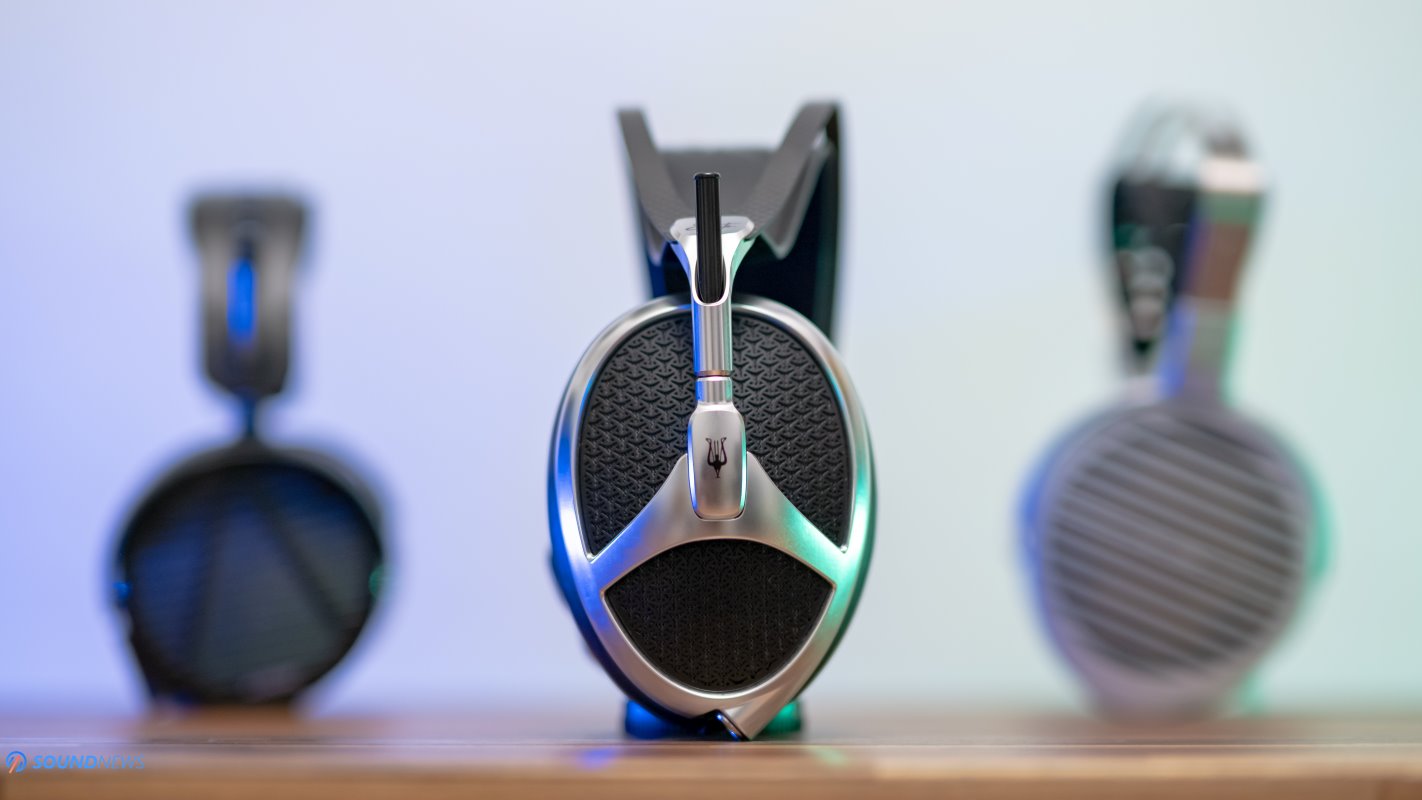
V. Detail Retrieval & Transparency
I couldn’t get over the fact that the Empyrean couldn’t extend the treble very well, losing sparkle and bite in the most sensitive part of our hearing. On one hand, some energy was missing the action, on the other hand, some people were really into this buttery smooth & relaxed sound signature, emerging a cult following around them. The Elite upped the ante but from a price point onwards, I’m no longer chasing for a particular skill set, I just want them all. I want a technical, clean and resolving sound, plus all the naturalness of this world. It’s a massive challenge for headphone makers, but it’s not an impossible one. I observed that in time headphone makers started catching up with the sound of high-end loudspeakers. Personal audio isn’t 100% there, but with the latest releases the gap is shrinking at a rapid rate and I cannot wait to experience what’s in store for headphone enthusiasts in the distant future.
The Elites made massive leaps in key areas, the sound is no longer lagging, the decays are faster and the treble improved by a good deal. What was almost muddy and out of focus is now crystal clear and very defined. Detail retrieval is not about how much information you can hear in the treble, it’s about how much more you can hear everywhere in the frequency response, a mistake that many reviewers are still doing today. Disregarding the extra information popping in the treble, there are more layers of bass on the Elite, and even the vocals are clearer sounding. Listen closely with reference recordings and you’ll hear deeper organ pipes, a crisper outline of the bass guitars and more layers of bass on electronic music. The whole frequency response feels more complete from top to bottom, even if headphone measurements won’t show you that. Measuring equipment can tell you about the energy happening in the frequency response, but they can’t measure resolution that’s oozing from headphone drivers, which only our brains can do. The Elites are definitely there with the big boys when it comes to resolution, sometimes reaching their performance and sometimes not so much. Upper-class Hifiman creations are still a hair crisper & more transparent sounding like HE1000SE and Susvara, but the Elites are sounding comparable to Audeze’s LCD-5 ($4500), they have similar resolving abilities with Final’s D8000 PRO LE ($4800), Kennerton Rognir ($3430) and Erzetich Charybdis (€3000).
You might be aware of this, maybe not, but most of my articles are made for D/A converters, there is something that draws me to them. Their technical performance always fascinated me, a job that very few units perfected. Their main job is to convert a digital signal into an analog one as accurately as possible, without degrading the signal-to-noise ratio. The job of a headphone is to transmit the analog signal coming from the source/amplifier without adding coloration or distortion. It sounds simple on paper, but oftentimes people are investing decades of work until that happens. Detail retrieval is important in downstream and upstream equipment, getting a resolving D/A converter is only half of the job, as everything else needs to be on the same level. When doing DAC reviews, I’m usually closing myself in the office for a few days and with the help of the Hifiman Susvara things are slowly becoming clear to me. While the Elites won’t outperform them at their own game, these aren’t that far off if being completely honest with you. Everything sounds a hair sharper and more outlined with the Susvara, but the same sounds can be heard via the Elite as well. The final result isn’t so sharp and defined, but considering the price difference, I’m okay with that. I can accept a small drop in resolution in exchange for the ultimate build quality and comfort.
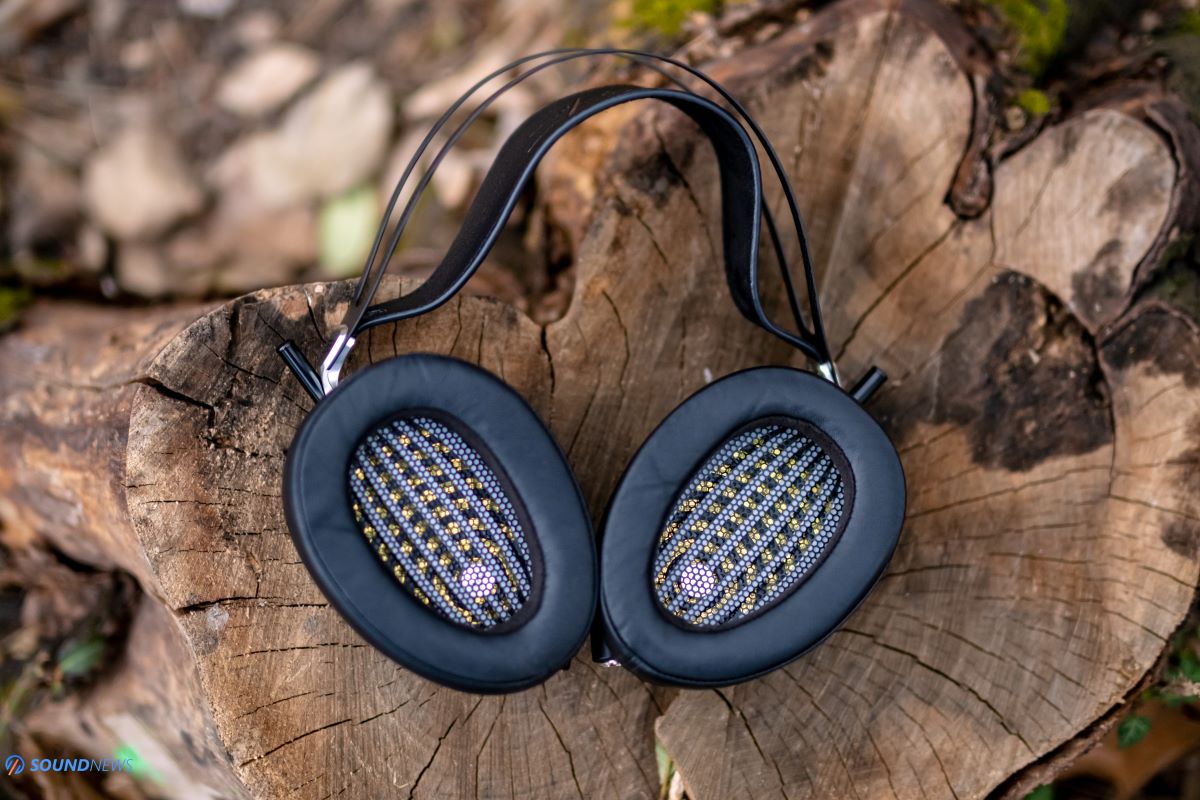
Frequency Response
VI. Bass
The Elites have an outstanding bass performance, starting with the extension down low, sustain, decay and finishing with its cleanness and overall quality. Regardless of the earpads that you’ll be using, Meze Elite won’t drop the bass output to the rest of the frequency response, but if you want a punchier bass delivery, then nothing does it better than hybrid earpads – which are my favorites when casually listening to music. When I’m trying to focus on things playing in the background, angled Alcantara pads are by a hair better due to a nicer stereo image, highlighting a more precise location of the notes, but when I want to immerse myself into the music, then again hybrids are just doing that a lil’ bit better for me. There is a minor roll-off between 20 and 30 Hz with Alcantara pads, but the roll-off is so small that you won’t hear it when critically assessing their sound. I’m no bass head by any means, but I do like a nice rumble in the bass, especially when my eardrums are getting a nice massaging session. Looking up at the headphone wall, I think that Elite, Rognir and LCD-4 have the strongest bass output, with the exception that Elite offers a clearer type of bass. You can make HE1000SE and Susvara as punchy and alive (even a bit more), but you’ll need monster-sized amplifiers for that to happen which can scare your wallet as well. Waking up the Elite was an easy task, as less than a Watt in 32 Ohms was more than enough to start dancing to the rhythm of the music, even portable DAPs awakened a nice bass slam. For modern music lovers, hybrid earpads will be planting more life into them, elevating the whole sub and mid-bass from linearity, an effect that I like with electronic and rock music that added warmth and weight to the sound. While Meze and Rinaro engineers improved bass quality as much as they could versus the Empyrean, making it faster, tighter and clearer, they didn’t lower its energy down, which is a good thing in my book.

VII Midrange
Building a house sound that people could remember and latch on to isn’t an easy task. It takes time to build one and a lot more to perfect it and I do think that Meze is nicely shaping their house sound for a while now. When I started my Meze journey with the 99 Classics, I couldn’t complain that much as they weren’t expensive. Although their technical performance wasn’t impressive, their midrange stood out immediately! They didn’t sound like your regular dynamic cans of Beyerdynamic, AKG or even Sennheiser, sounding thicker and bolder than the rest. Everything that had to do with vocals, strings and wind instruments sounded so damn impressive. Making the midrange right should be an essential task when trying to win our hearts, as most of the sounds surrounding us in real life are born in this region. I probably mentioned this sentence in a separate review (it feels that way), but it’s the unspoiled truth. You can impress a teenager with a strong low-end delivery or a budding audiophile with a sharp treble delivery, but you will impress a connoisseur with a natural midrange delivery. The Meze sound is growing up, it gets better with every release, the only thing that remains is its pure midrange that puts puzzle pieces back together and makes everything right. When it comes to midrange purity and musicality, the Elites are currently the no.1 headphones that I know of, followed by the Susvara, LCD-4, LCD-5 and then by Rognir and Charybdis. There’s something that compels me to put them on every day, maybe it’s their fullness, their warmth, their smooth and relaxing character, or maybe all of the above is creating a soul-grabbing experience for me. These indeed sound richer and fuller-bodied to the rest of my cans and that makes them a perfect candidate for linear or even bright-sounding setups.
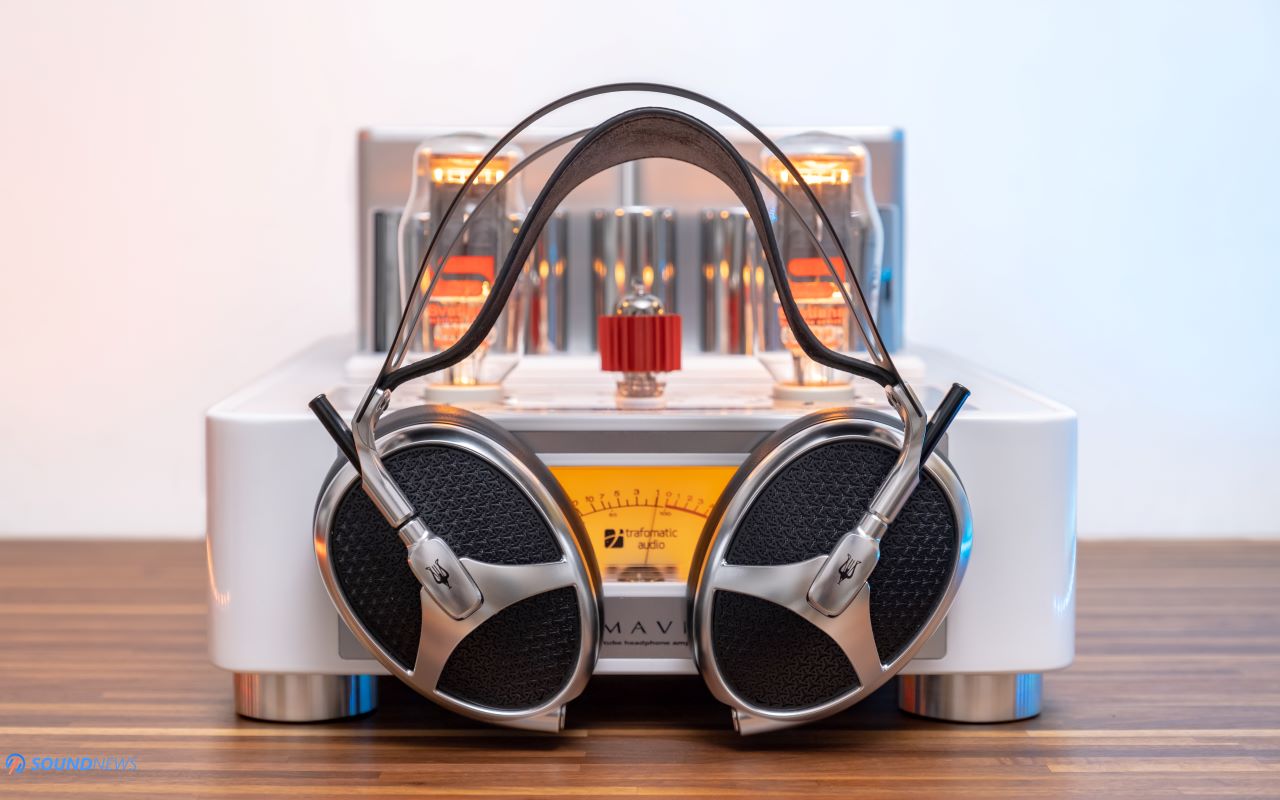
VIII. Treble
Elite’s treble delivery isn’t a double-edged sword as it might happen on the Abyss AB-1266 and all its variants, forget about the sharpness of the Hifiman HE1000SE, even Audeze’s LCD-5 will sound hotter in comparison with the best of Meze. While the treble is well-extended past the boundaries of our hearing abilities, the accent is never put in that region, thus excess energy won’t go towards sharpness or strong leading edges, but mostly in the bass and midrange departments. Feel free critically listen to music if that’s your thing, but these were made for music appreciation, making you feel great, and disconnecting yourself from the outside world. In time I discovered that the Elites have a strong bite in the treble, they can duplicate the metallic surface of a cymbal, and they can add thump and rawness to the sound when needed, however, they will never make you clench your fists or bite your tongue. There’s no listening fatigue and no brightness whatsoever. The jump from Empyrean to Elite is massive, even the frequency response feels wider and more complete. These won’t provide that serious sound of the north usually found in Raidho, Borresen and Scanspeak loudspeakers, going with a Romanian rhapsody that wants to impress with overflowing naturalness and bright color palette. If I would describe their treble with just a few words, then those would be: delicate, velvety, refined and sophisticated.
Pairing them with different amplifiers was an easy job, you won’t kill your time when doing so and your wallet won’t run away. If you already own a desktop headphone amp and a decent DAC, then I’m sure those will sound great with the Elites. Their tonality is spot on and although you can drag it towards warmth or brightness, there is a limited space in doing that. Their sound signature will still prevail and show its true form no matter what.
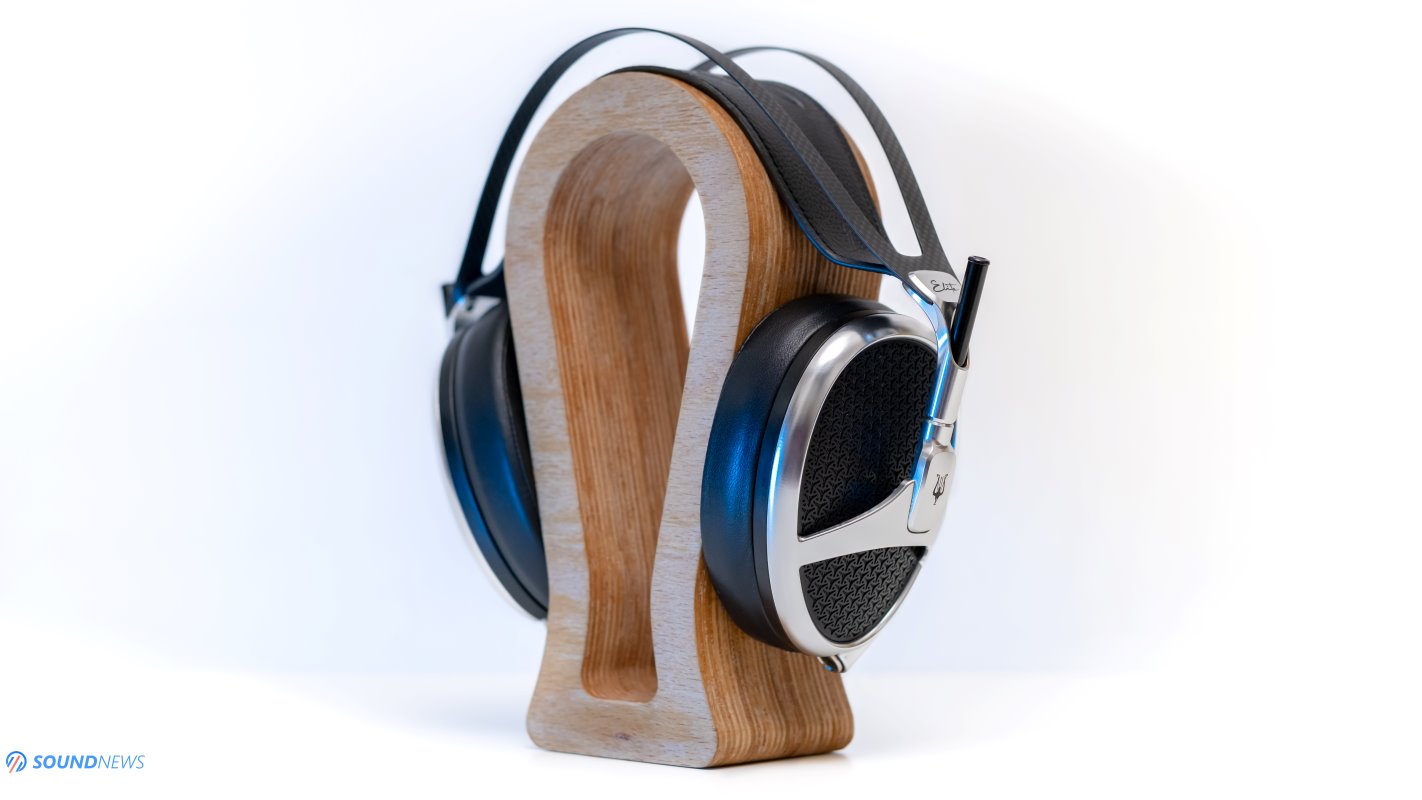
IX. Meze Elite Detailed Measurements
After offering my subjective impressions, let’s check how things are looking under a magnifying glass. I used a Singxer SU-6 DDC that galvanically isolated the USB ports of my PC, followed by a Chord DAVE DAC that was doing the heavy lifting. The measurement rig used was a MiniDSP E.A.R.S. system calibrated with HPN (Original Headphone Compensation) files. Please note that E.A.R.S. is not following any IEC standards, meaning that my readings can’t be used as reference measurements or anything like that. I’m doing them for fun, getting a general idea about their sound signature & performance. I measured them a couple of times, as both channels needed to be matched and finding the perfect spot on the test jig wasn’t so easy, especially with Alcantara and angled Alcantara pads. No side pressure was applied to the ear cups, they stood still in their natural position.
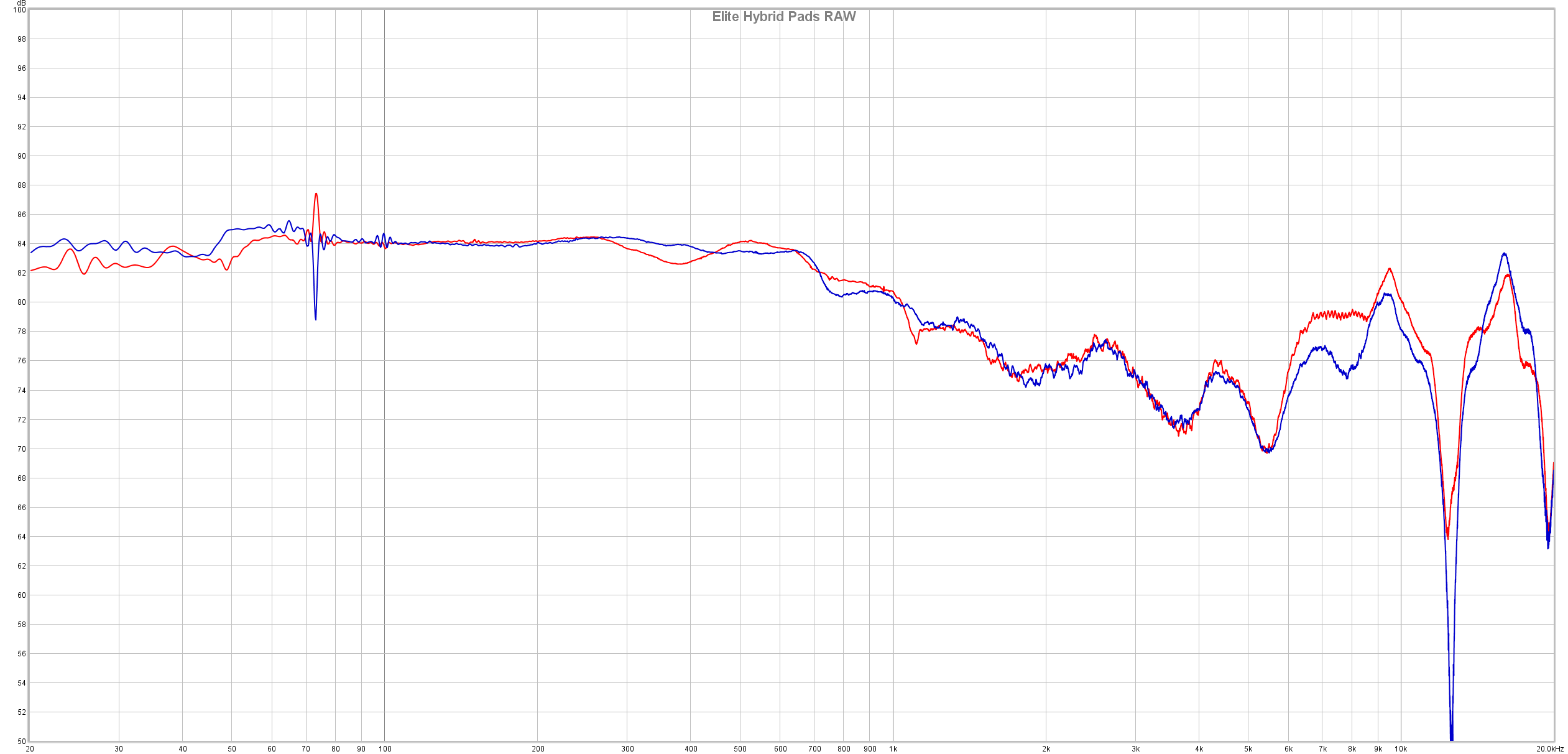
This is their RAW frequency response without any smoothing applied, please disregard the slight channel mismatch in the sub-bass, as if I’m touching one of their earcups, there would be slight variations in the measurements. Overall, their driver matching is good and if you’re wondering, the slight deviations between 7 and 8 kHz won’t affect their performance, I cannot hear that difference at all.
Applying a gentle 1⁄12 smoothing, you can see that these have an outstanding bass and midrange performance. After sending a sinewave at an SPL of 84 dB, I wasn’t surprised that there aren’t deviations from linearity up until 700 Hz are reached and it seems that most flagship planar headphones are doing the same trick. My test jig is calibrated, but it’s not following the Harman curve/target so the treble might look like it’s riding a rollercoaster, but I assure you that’s a normal behavior. The most sensitive part of our hearing goes down by a few dB, strengthening my claims that these won’t tire you down with aggressive music. There are several slopes at various places in the treble, but there aren’t nasty rises that could add sharpness and badly affect their tonality.
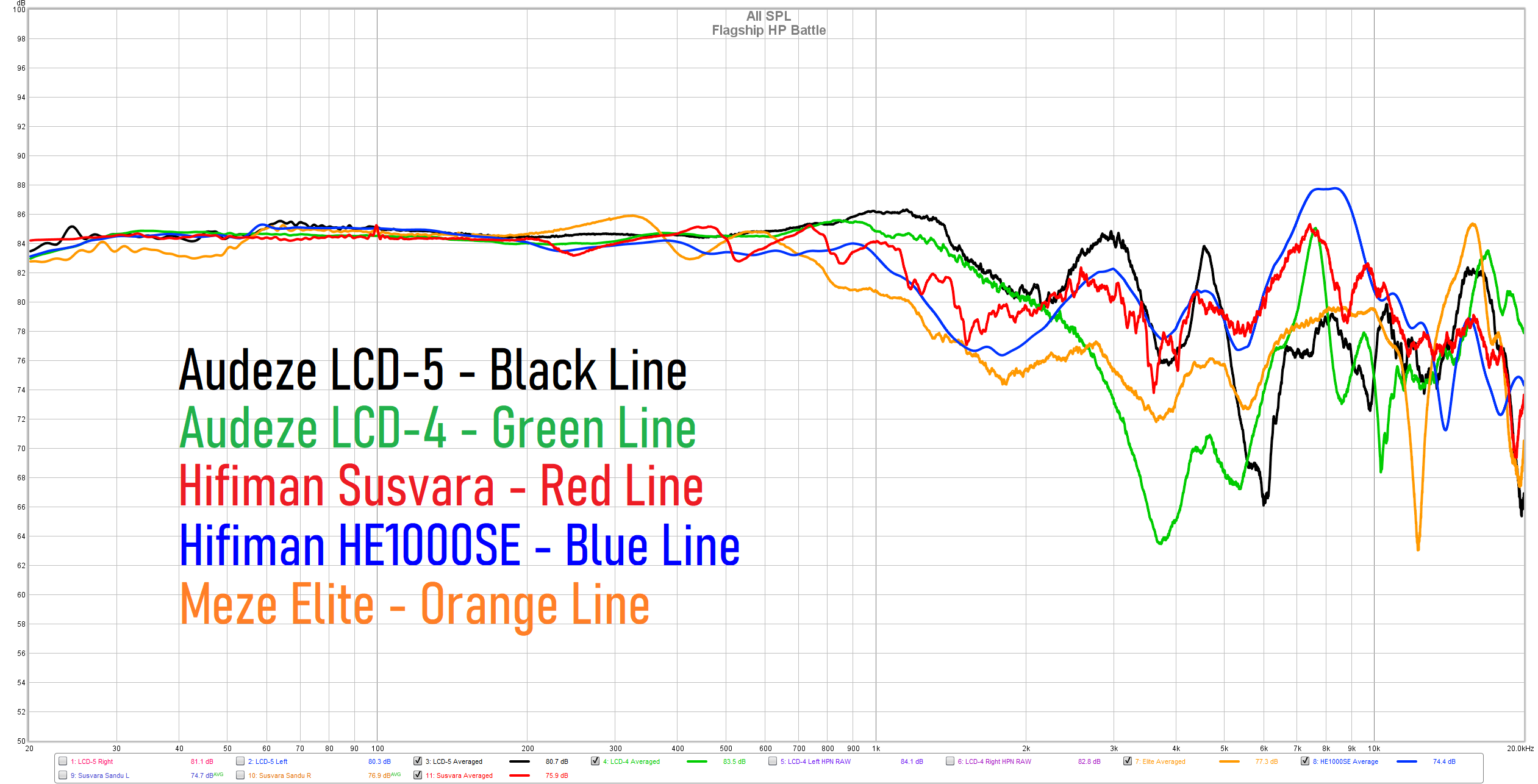
All in all, this is a good FR reading, that isn’t so different from the rest of the flagship headphones, and if you are curious how the Elites are comparing with the rest of the gang, here’s a graph that will show you everything.
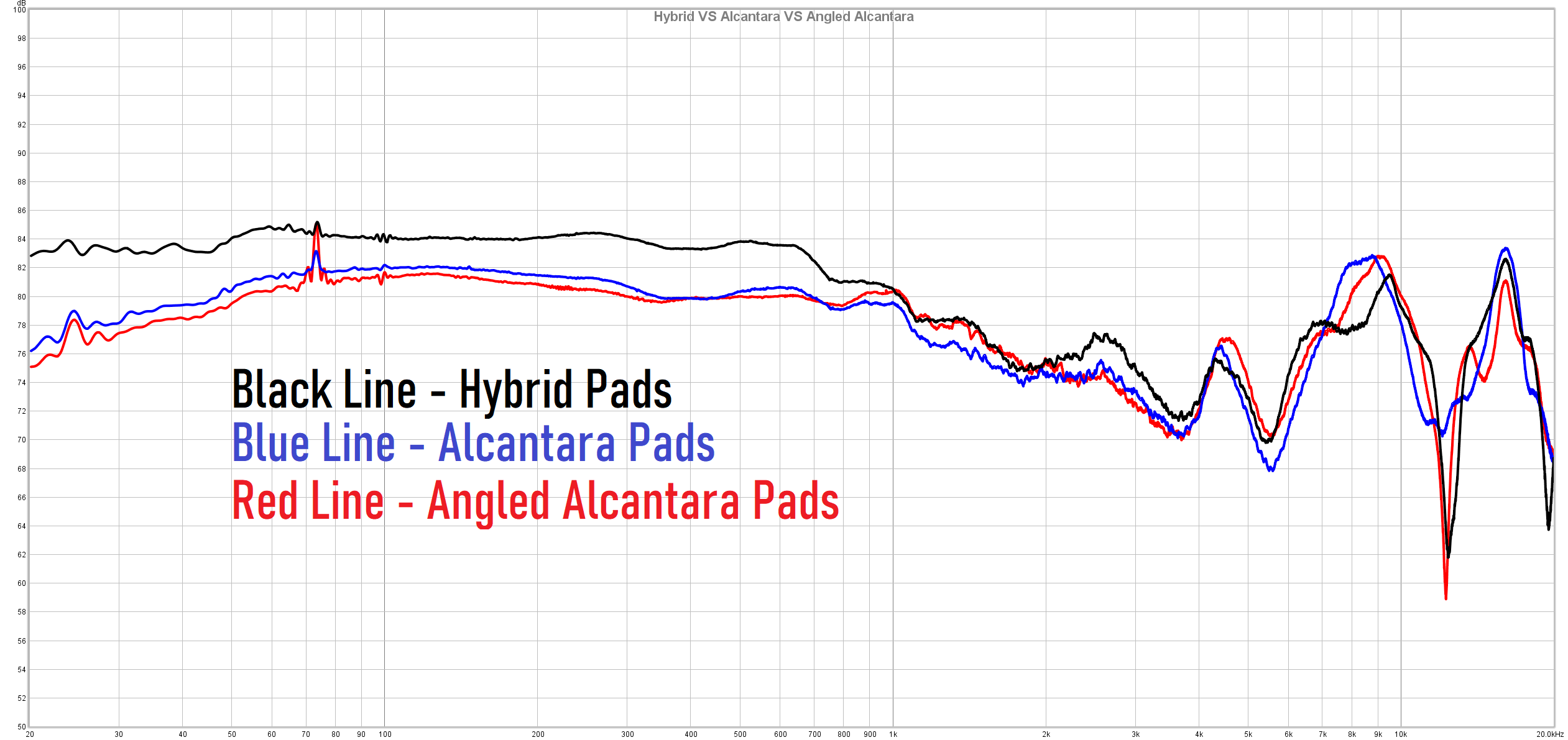
If you are curious how the hybrid, Alcantara and angled Alcantara pads are looking from a frequency response standpoint, here is a graph that will help you out. There is quite a difference in the bass and midrange, but the treble wasn’t affected that much. If you want a reference sound, then angled Alcantara pads will provide you some linearity and if you’re here for fun, then hybrid pads are considerably groovier sounding.
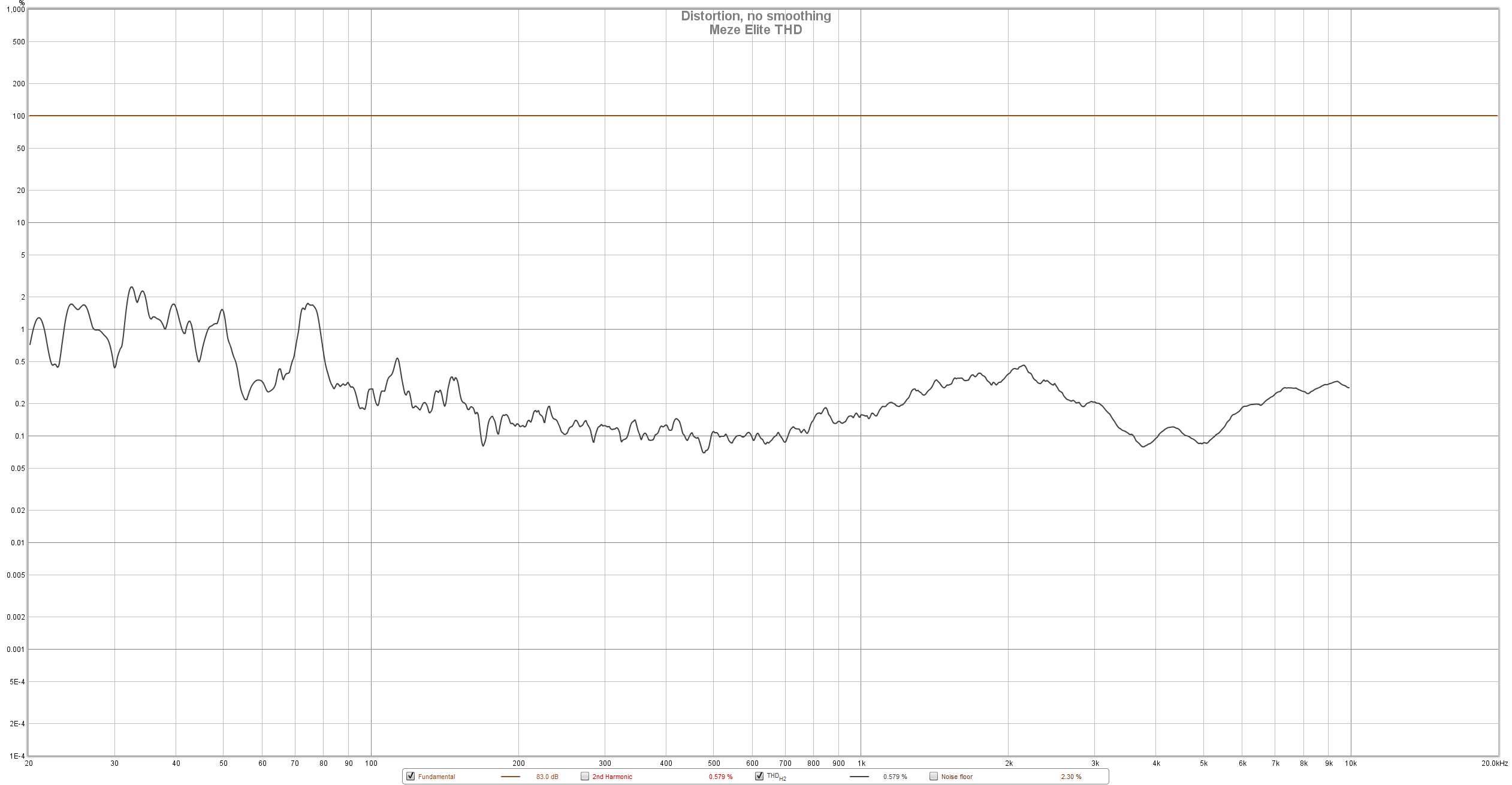
Their THD reading is great, it looks by orders of magnitude better than any other Meze headphones, reaching as high as 2% in the bass and 0.4% in the treble, usually staying in the neighborhood of 0.1% which is simply great.
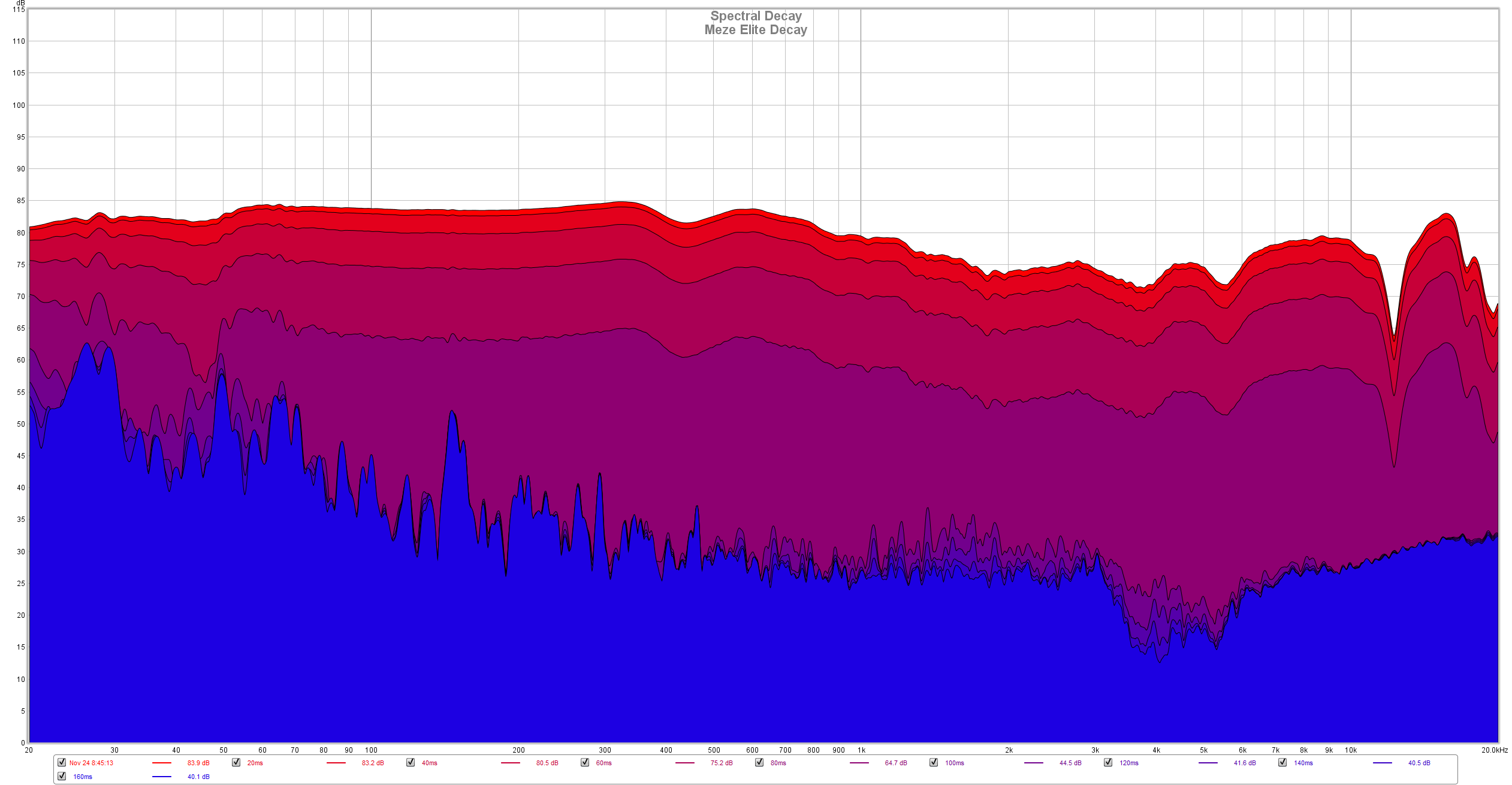
Spectral decay looks good and after sending a 300 Hz sweep tone at 84 dB, it drops to 14 dB at the lowest point and rises to 63 dB at the highest point after a time frame of 160ms, usually staying at around ~30 dB, which leads to a faster driver movement compared to their Empyrean and 109 Pro.
Waterfall combines the FR plot and decay into a single graph and you can see their FR from a different angle including their impulse response.
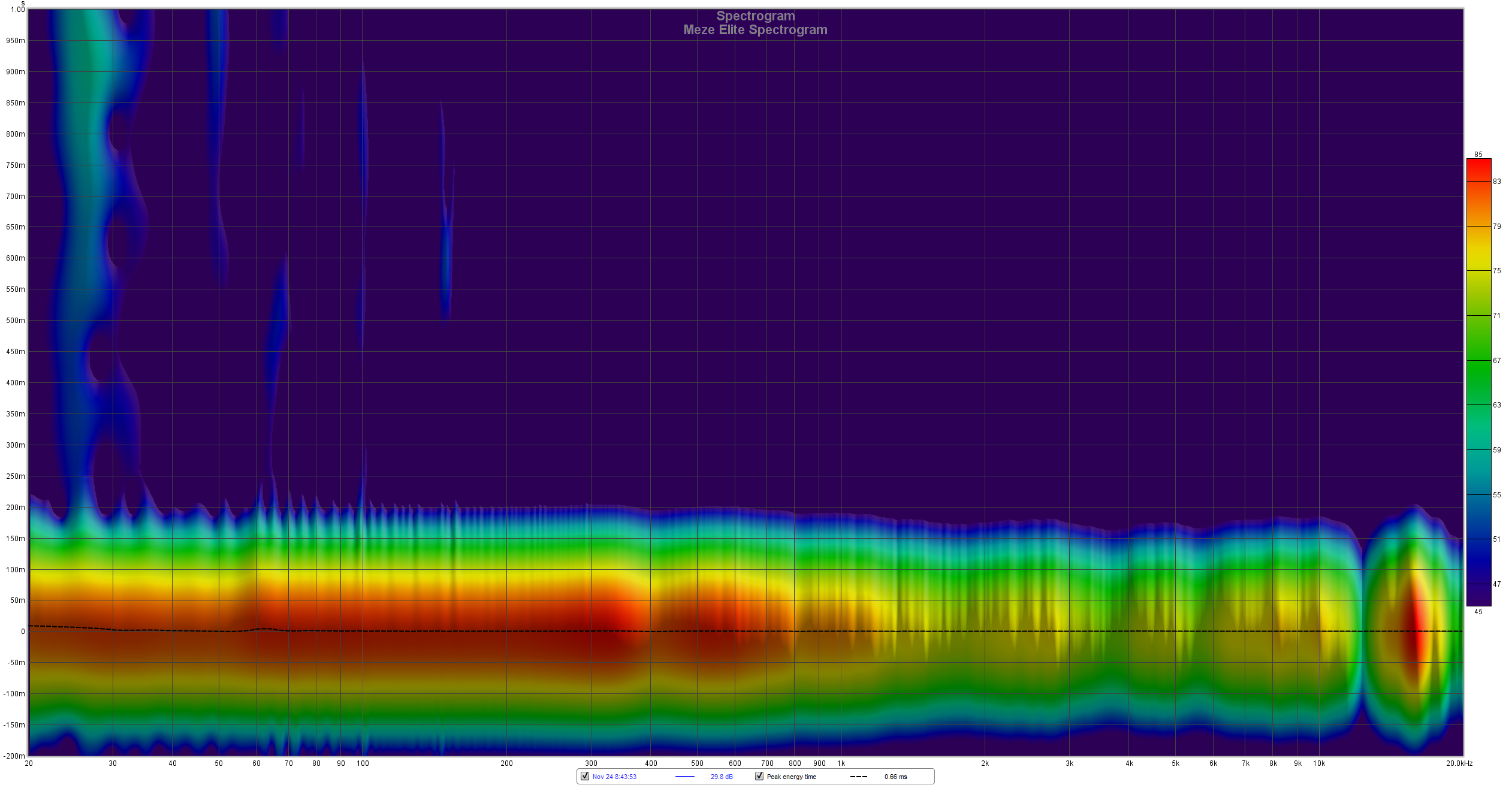
The spectrogram shows a minor ringing happening between 20 and 30 Hz, but I don’t see nasty distortions building up anywhere else. Open-back headphones usually have more of these nasty rises, including their 109 PRO and Empyrean, once again strengthening their flagship status.
Overall, Meze offers three different tunings with three pairs of earpads. You can choose between a fun sound signature that sacrifices some width and stereo image or you can go with a reference tuning that improves their stereo image and makes them audiophile-proof in a way.
X. Comparisons
I have already compared the Elite with the Erzetich Charybdis (€3000), Phobos V.2021 (€2000) and Audeze LCD-4 ($4000) and if you’re curious about that, you can check my Erzetich Charybdis review right here. Today I will focus on more important comparisons with two flagship competitor headphones which are also more expensive.
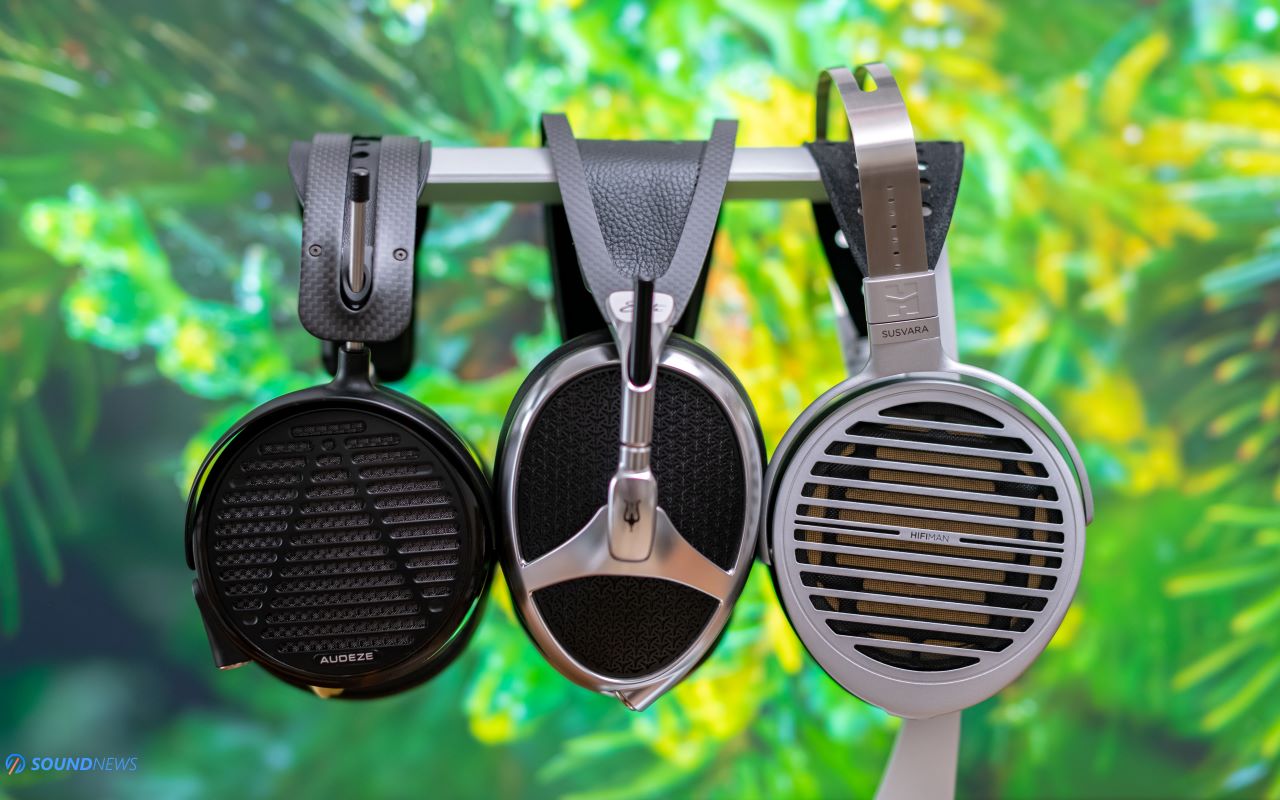
Meze Elite ($4000) VS Audeze LCD-5 ($4500) VS Hifiman Susvara ($6000)
If you’re a manufacturer and my words are going to offend you, then please accept my apologies, but understand that I need to stay honest with my readers and viewers. My opinions are always my own and that isn’t going to change anytime soon. I’ll be as objective as possible, without taking into account my personal preference. If you’re an avid reader, please enjoy the showdown.
All my comparisons are done in the morning, after a hot shower, two poofs of Audispray, a hot coffee, and after volume matching them at 90dB with the MiniDSP E.A.R.S. All these are mandatory, as I know that my hearing and mood levels would be at their prime.
- When it comes to looks, build quality and comfort, one looks like a sculpture made by Michelangelo Buonarroti that you can’t take your eyes off and the other two look more common and less majestic. Combining aluminum cups, a carbon fiber headband, a leather strap, a revolutionary magnetic earpad attaching system with world-class comfort levels, I’m sorry but there isn’t a headphone brand that can challenge Meze designers. There is no clamping force on the Elite and there is a substantial one on the LCD-5, plus their pads aren’t so massive with less room for elven ears, on top of that…you can’t remove them. Susvara is more comfortable than LCD-5, but having a wooden veneer (instead of real wooden cups), faux leather pads and a faux leather strap, I’m sorry but these don’t have the build quality of a $6000 headphone.
- Meze Elite: 10
- Audeze LCD-5: 8
- Hifiman Susvara: 7.5
- When it comes to sensitivity, Elites are currently some of the easiest-to-drive planars that I have experienced so far. For a similar SPL, LCD-5 would need 3 additional clicks on my amplifier and I need to double everything for the Susvara, but that shouldn’t come as a surprise, as Hifiman’s best are known to be power-hungry. Portable devices work great with the Elite, some of them could work with the LCD-5 and I know just a single one that could potentially drive the Susvara (FiiO M17 in DC power mode). This is quite a big deal as I can carry the Elite anywhere with me and listen to them in hotel rooms, in the mountains or on the beach, something that’s doable with the LCD-5 and pretty much impossible with the Susvara.
- Meze Elite: 10
- Audeze LCD-5: 9
- Hifiman Susvara: 6
- When it comes to frequency response from top to bottom, Susvara offers the widest coverage and I believe they have the most refined treble performance in existence. LCD-5 as their predecessors have quite an uneven treble performance, there is a massive gap at 6 kHz that removes some brilliance and bite, something that isn’t happening with the Elite. If linearity is your thing, then Susvara comes first, followed by the Elite and then by the LCD-5 – which is still quite uneven and you can hear that with a trained ear.
- Meze Elite: 9
- Audeze LCD-5: 8
- Hifiman Susvara: 10
- When it comes to transients as a whole, Susvara is leading the pack, the Elites aren’t that far off, both sounding fast and impactful most of the time, although you will need the right setup for the Susvara to awaken scary dynamics. With a mediocre setup, Susvara could arrive last in a drag race, but with an end-game one, these are ever so slightly faster and punchier sounding. While the LCD-5 are fast sounding as a whole, seriously outpacing their past doings, lacking a powerful bass slam limits their performance and ultimately, the fun factor, hence getting in the last place. You won’t see weak bass output on LCD-5’s measurements, but you can hear that instantaneously. Something isn’t clicking on the LCD-5, even when put on electronic music.
- Meze Elite: 9
- Audeze LCD-5: 8
- Hifiman Susvara: 10
- Moving on to soundstage, driver size matters as by default, Meze Elite are sounding considerably wider, taller and deeper than the rest of the gang. Susvara and the LCD-5 have smaller drivers and regardless of what amplifier will be driving them, Elite would come on top as the undisputed champion. These are doing imagining, depth and soundstage like no other planars (except for Charybdis – which are even bigger sounding), hence easily winning this round. Unfortunately, from an amazing depth on LCD-4 and quite an airy overall performance, Audeze decided to go with an on-stage presentation on the LCD-5 that shrunk the width and depth of the stage, sounding closer to my face compared to any other flagship planar headphone. Sigh.
- Meze Elite: 10
- Audeze LCD-5: 8
- Hifiman Susvara: 9
- When it comes to transparency and detail retrieval, all of them are highly resolute, with the exception that the Susvaras are doing that ever so slightly better. In my view there is a tie between LCD-5 and Elite, as both are clean and transparent sounding, but not pushed to the extreme like the Susvara. Hifiman’s best are still unchallenged and that’s the only thing that makes them appealing in the eyes of headphone collectors. Audeze made big leaps forward with their LCD-5, seriously outplaying their predecessors and the same can be said about the Elite versus the Empyrean.
- Meze Elite: 9
- Audeze LCD-5: 9
- Hifiman Susvara: 10
- The most difficult part I left for last and that’s their timbre / tonality, or how natural and believable I find them. Honestly, Elite has the most incredible tonality of the bunch, always sounding pure with just a pinch of warmth. The Susvaras are the warmest and most natural-sounding Hifiman headphones to date, these are honestly the only Hifiman cans that could deliver a proper midrange that isn’t thin or lightweight, hence arriving second. Audeze LCD-5 as a whole have a good tonality if you aren’t comparing them with anything else, but once you start looking for flaws, then you will slowly notice that the sub-bass is lacking punch and the treble is uneven sounding. A few notes could be loud and others could be toned down. LCD-5 has an uneven treble performance and that can be seen in their measurements and you can also hear that when listening with a trained ear. None of them sound fake, bright or bothersome, but the Elites are the easiest to fall in love with.
- Elite: 10 (life-like, easy to listen to, pours naturally, has a slight bite in the upper treble)
- Audeze LCD-5: 8.5 (the most linear sounding, having a great midrange and mid-bass delivery, but a troublesome sub-bass and treble performance. These could be fun sounding only after carefully matching them with a tailored-to-them headphone amp)
- Hifiman Susvara: 9.5 (the only Hifiman headphone that could place goose bumps all over your body, these have an excellent tonality, and there is plenty of warmth, fullness and kick, but you’ll need to sell your soul for a proper amplifier to drive these to their fullest)
- Final Results
- Meze Elite: 67 points
- Audeze LCD-5: 58.5 points
- Hifiman Susvara: 62 points
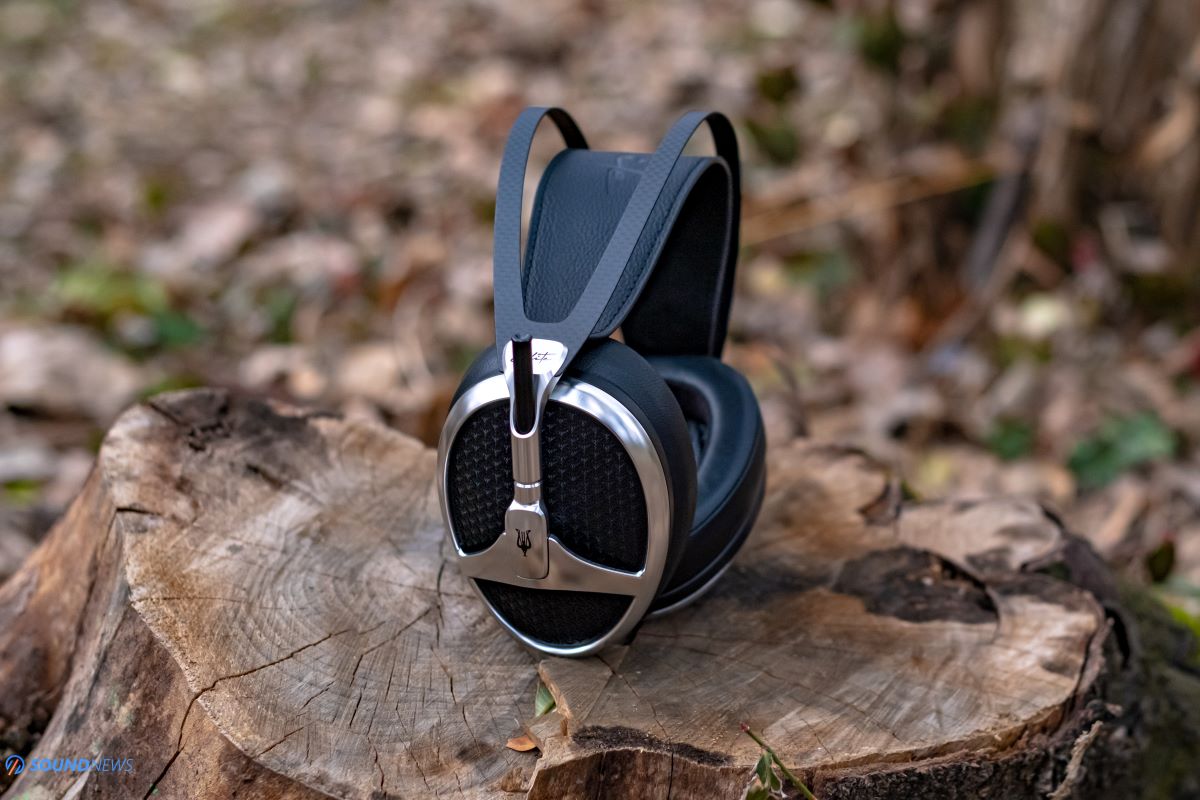
My Conclusions
Before arriving at my conclusions, I need to confess something to you. When I started writing audio reviews eons ago, one of my closest friends was always poking fun at me: “Just a single page for sound impressions? Come on, you could do better! Or “A three-page review isn’t a proper review; you can do much better than this!” Or “My mother-in-law can do better pictures than yours”. Every time I would post something, he would appear out of nowhere and poke fun at me. I was annoyed at first and I couldn’t understand why he does it. Slowly, I started doing 4-page reviews, 5-page, 6 then 8 and right now nothing is shorter than 14 pages, even for mid-level devices. This guy wasn’t interested in audio, but he read all my articles, trying to convince me that I can do better. He pushed me over the edge, and I believe if you want to succeed regardless of what you’re doing, then you need to push yourself harder, every day.
When I first met Meze’s team in 2015, I remember seeing a very young team full of hopes and dreams and although they were kind to me, always informative, always funny and trying to be there when I needed them the most, I never offered them back the same treatment. I was pushy with them. I told Mircea that he can do better (talking about 99 Classics at the time), when I met Antonio, I told him that the competition is still stiff around $3000 and that the Empyrean should be improved in the future. I wasn’t complaining, I wasn’t trying to be mean, it’s not in my nature, on the contrary…I was trying to help them, pushing them to their limits. I saw the potential in their eyes, I saw the young blood and their wet dreams hovering around their heads and I started working them out, trying to guide them towards better products.
Nowadays, Meze is no longer that inexperienced dreamy team, their confidence grew tremendously, they got ballsier and cooler too. They finally found their path, Elites are no longer lagging behind the competition, I’m no longer pushing them and I feel that my guidance is no longer needed.
I’m getting this weird feeling that this is just the beginning for the young Meze team, they just learned how to walk, and there is still work to do until winning a marathon. Knowing that Meze are currently working on 15 possible projects (here’s my interview with Antonio Meze which reveals that information) already talks about their scope and ambitions which are growing at a steady rate. They are no longer dreaming, working on achievable goals, some of which will take a physical form in the coming years. Knowing their team quite well, their experience, their drive and ambition, I don’t think they can be stopped at this point, the snowball effect kicked in already.
It’s summertime outside, the temperatures are steadily rising and for this and many other reasons, the Meze Elites are getting most of my head time. They are comfortable to wear for a few hours a day, angled Alcantara pads aren’t sweating my ears, I find them easy to drive, sounding great even from entry-level electronics and portable devices, their tonality is spot on, their midrange and bass performance is fabulous and their stage is among the grandest I have experienced via headphones. They have the easiest and the coolest earpad removal system, having three distinct sound signatures depending on the earpads and these are up there with some of the best headphones in the business. Build quality, design and sound quality-wise, these are as good as it gets, what’s there not to like?

They can finally wave our Gold Award; they fully deserved it and I cannot wait to tell you more about the future of Meze Audio. If everything I’ve written resonated with you, then get some flowers to your lady first and then proceed to Meze’s web-store right here. You can get them from your local Meze dealer as well and if you’re coming from USA or Canada, then you can get them from these guys. (I can vouch for their amazing customer service). In case you’re getting a pair, don’t forget to leave a comment below. Just say Hi and let me know how these are treating you.
PROS:
- An outstanding unboxing experience, the packaging is great and there are plenty of accessories in the package
- Unrivaled design, build quality and comfort levels. Although looking big in the pictures, I can wear them for hours at no end and sometimes I’m forgetting that these are staying on my head
- Low impedance & highly efficient, you can drive these with pretty much anything, even with low-powered devices such as USB dongles and portable DAPs
- Highly Resolving and transparent sounding, on the same level with end-game headphones
- Fast and impactful sounding most of the time, more so than their predecessors. Expect a nice slam in the bass with the right amplifier
- Expect getting amazing driver control, especially with hybrid pads put on solid-state electronics
- Three distinct sound signatures with three pairs of earpads
- These are covering the entire frequency response in full, something I couldn’t say about their predecessors
- One of the widest soundstages and depth you’ll experience on planar headphones. If you want the widest, go with angled Alcantara pads
- These are highly technical, yet so damn pleasing to listen to
- The fun factor is blowing up out of proportions, especially via an R-2R DAC and all-tube amplifier, I just can’t put them down
- Although pricey, I think they are worth every single penny
CONS:
- Raw aluminum cups could show signs of damage earlier, apart from this, these are close to perfection in so many ways
ASSOCIATED EQUIPMENT:
- DACs: Chord Electronics DAVE, Rockna Wavedream Signature XLR, Gold Note DS-10 PLUS & PSU-10 EVO, SMSL D1SE V2
- Wireless Streamer & Music Server: Rockna Wavedream NET 4TB, Zidoo Neo Alpha
- DDCs: Denafrips Gaia, Singxer SU-6, Matrix X-SPDIF 3
- Headphone Amps: Trafomatic Primavera, Enleum AMP-23R, Ferrum OOR + HYPSOS, Burson Soloist 3X GT, Flux Lab Acoustics Volot
- IEMs: FiiO FH9, FH7S, Meze Rai Penta, LittleDot Cu KIS, 7Hz Timeless, Kinera Skuld & others
- Full-sized headphones: Meze Elite & 109 PRO, Erzetich Charybdis & Phobos V.2021, HiFiMan Susvara & HE1000SE & Arya Stealth, Audeze LCD-5 & LCD-4, Sennheiser HD800S, Kennerton Rognir (planar) & Vali, Apos Caspian, Sendy Peacock & Apollo, HarmonicDyne Poseidon & others
- Preamps: Chord Electronics Ultima 3 Pre
- Power Amps: Chord Electronics Ultima 5 Power, Burson Timekeeper 3X GT (x2)
- Loudspeakers: KEF Reference 3, Musician Knight 1, Sound of Eden Crescendo UNO
- DAC/Amps: Shanling H7, FiiO Q7, Topping G5
- DAPs: FiiO M15S, M17, Shanling M7, M6 Ultra, Hiby RS6, R6 Pro II
- Interconnects: Crystal Cable Reference2 Diamond (x3), QED Reference (x2), Topping TCX1 (x2)
- USB Cables: Supra USB Excalibur (x2), Chord C-USB, Matrix Hi-Fi USB
- HDMI Cables: Audioquest Diamond DBS, Supra 8K HDMI
- Speaker cables: Kimber PR8, Audioquest Type4
- Power Cables: Crystal Cable Reference2 Diamond (x3), Isotek EVO3 Premier (x2), iFi Audio SupaNova (x2)
- Balanced Isolation Power Conditioners: PLiXiR Elite BAC1500 (stereo setup), KECES IQRP-1500 and P14 (headphone setup)

